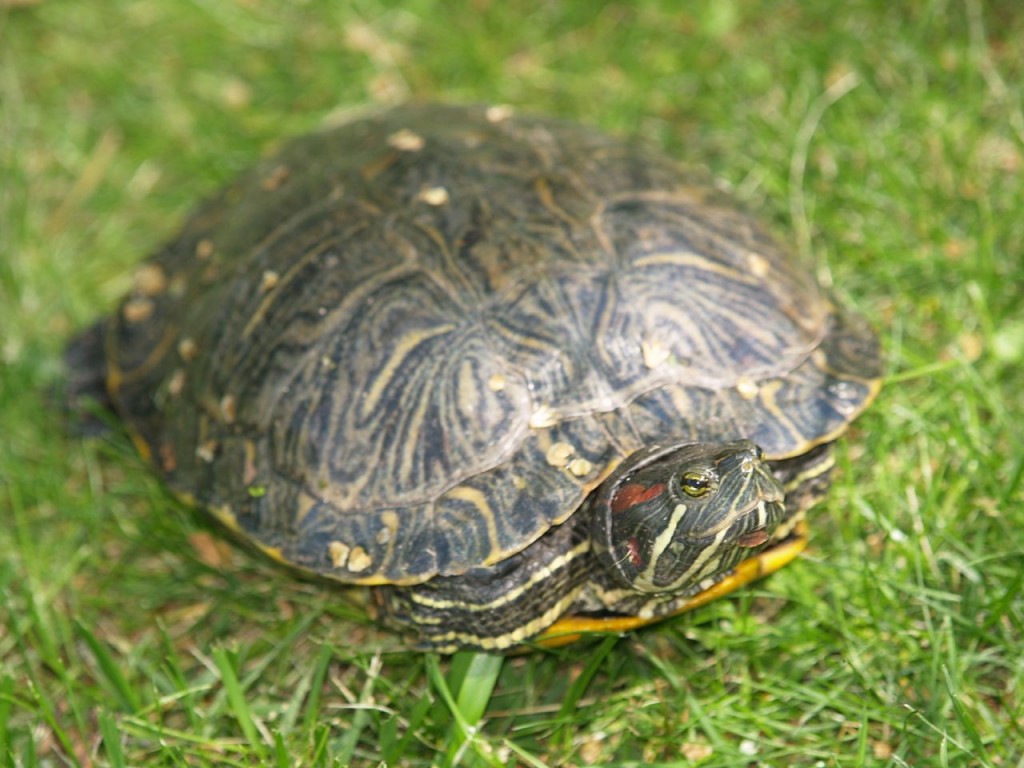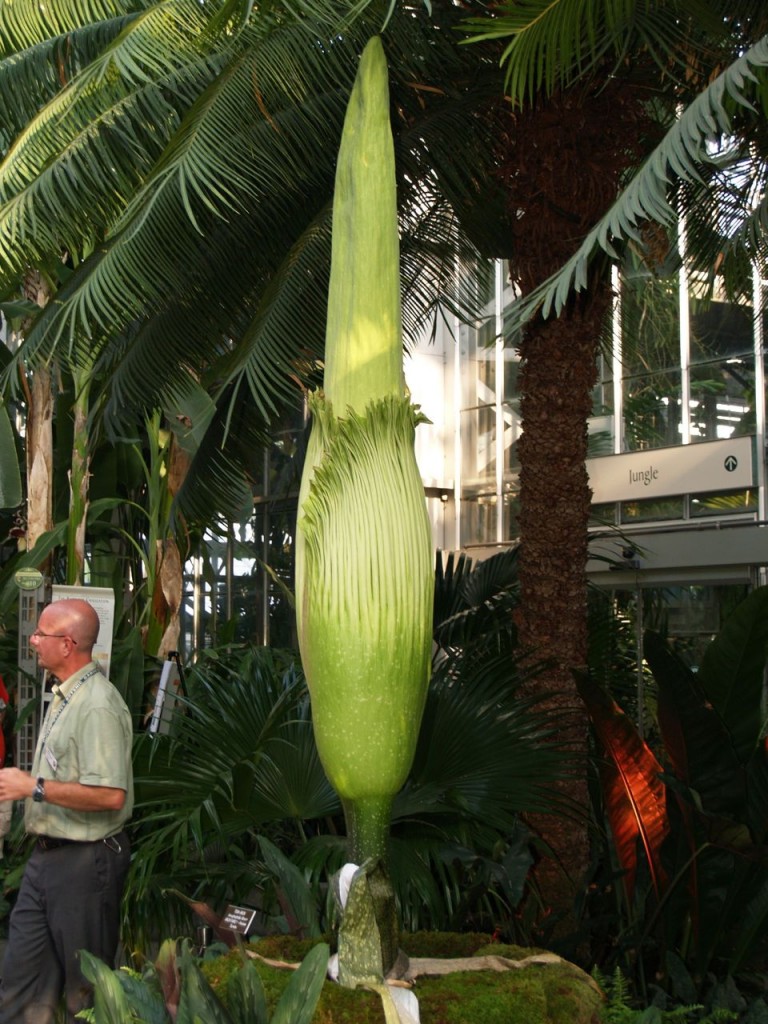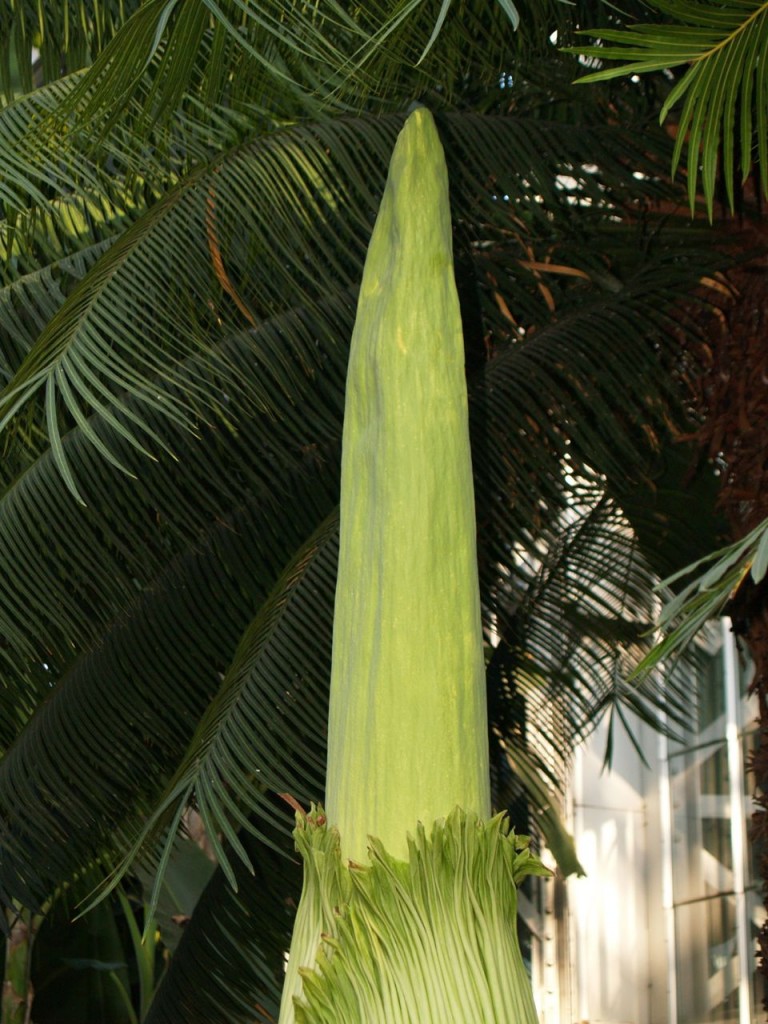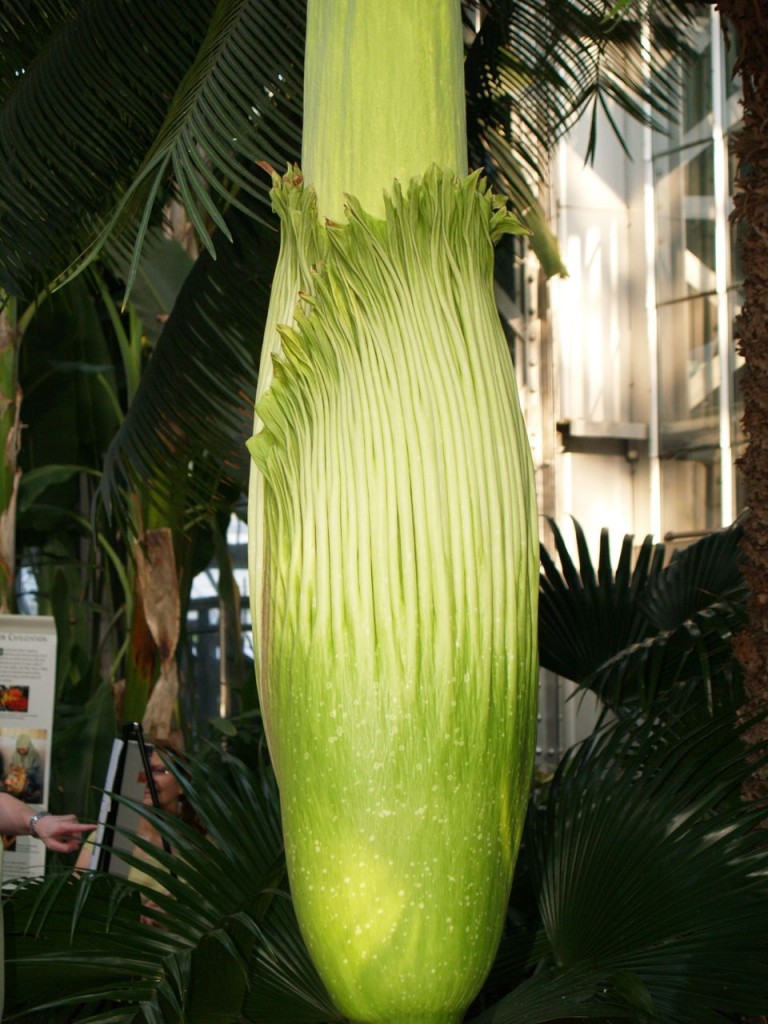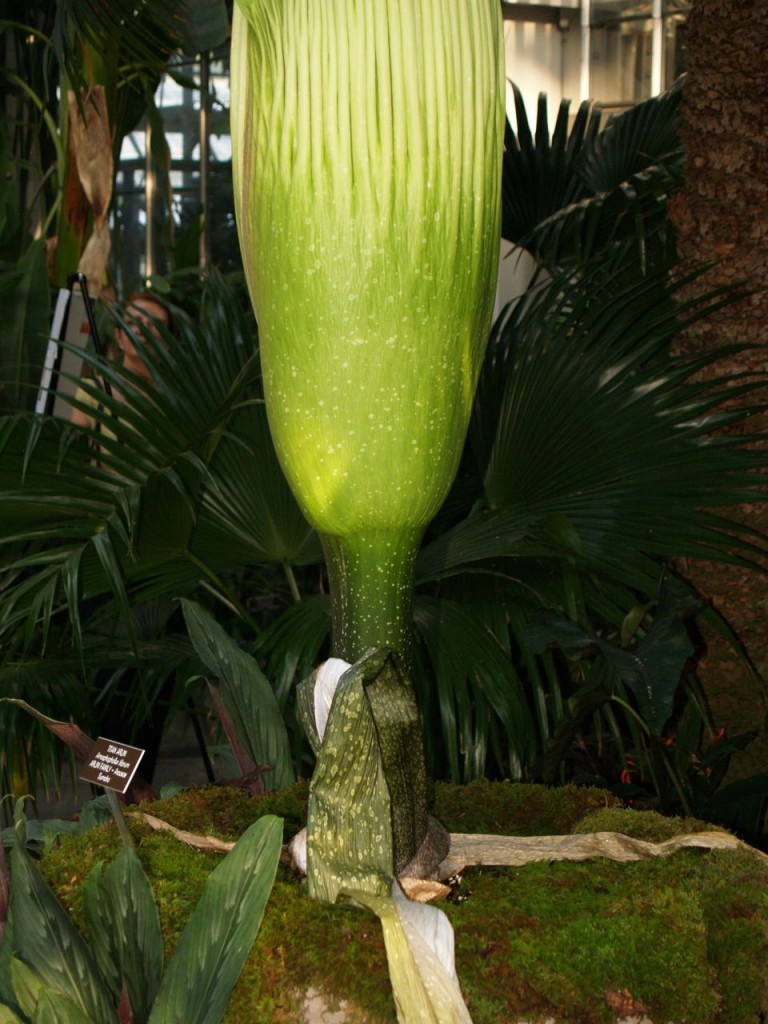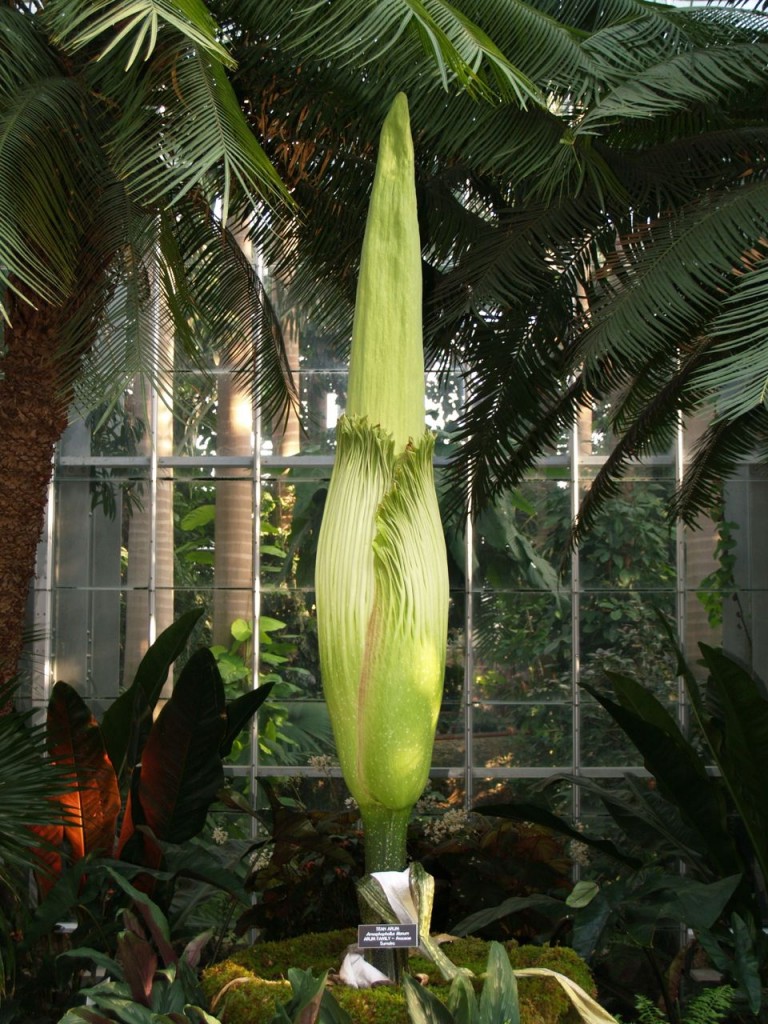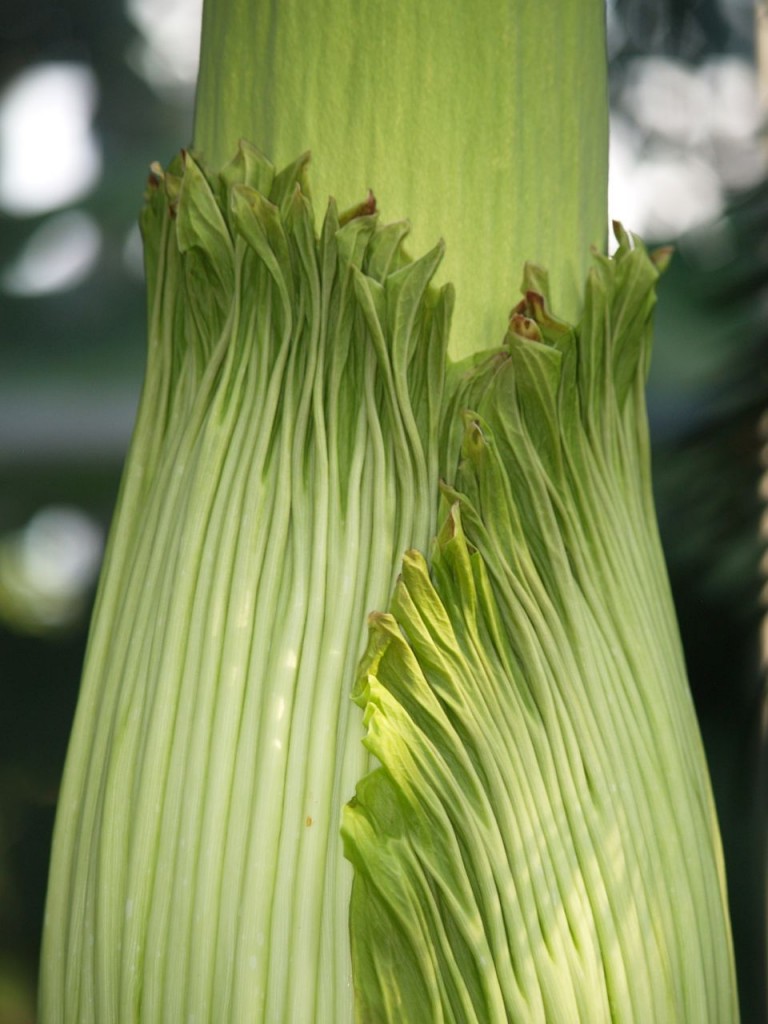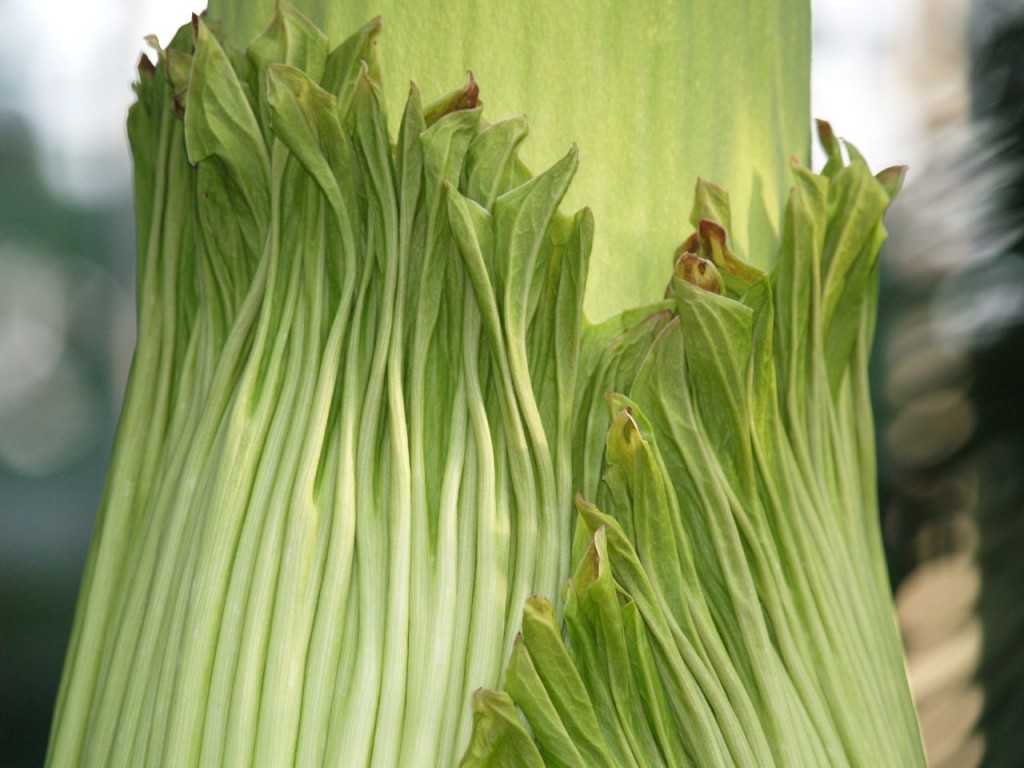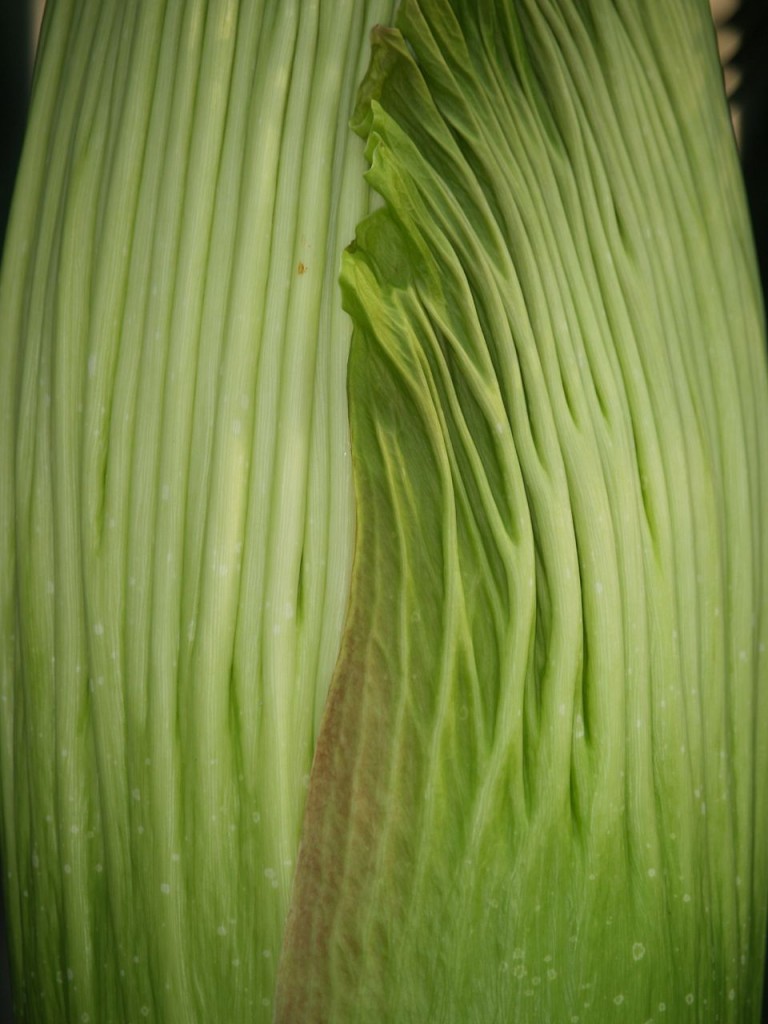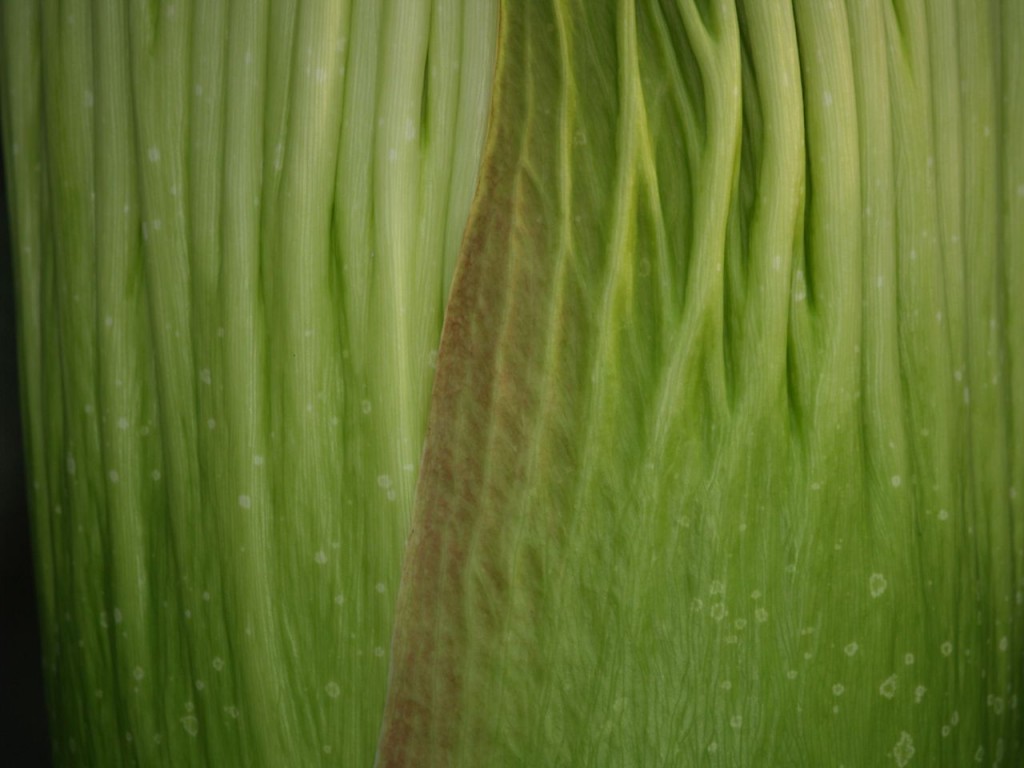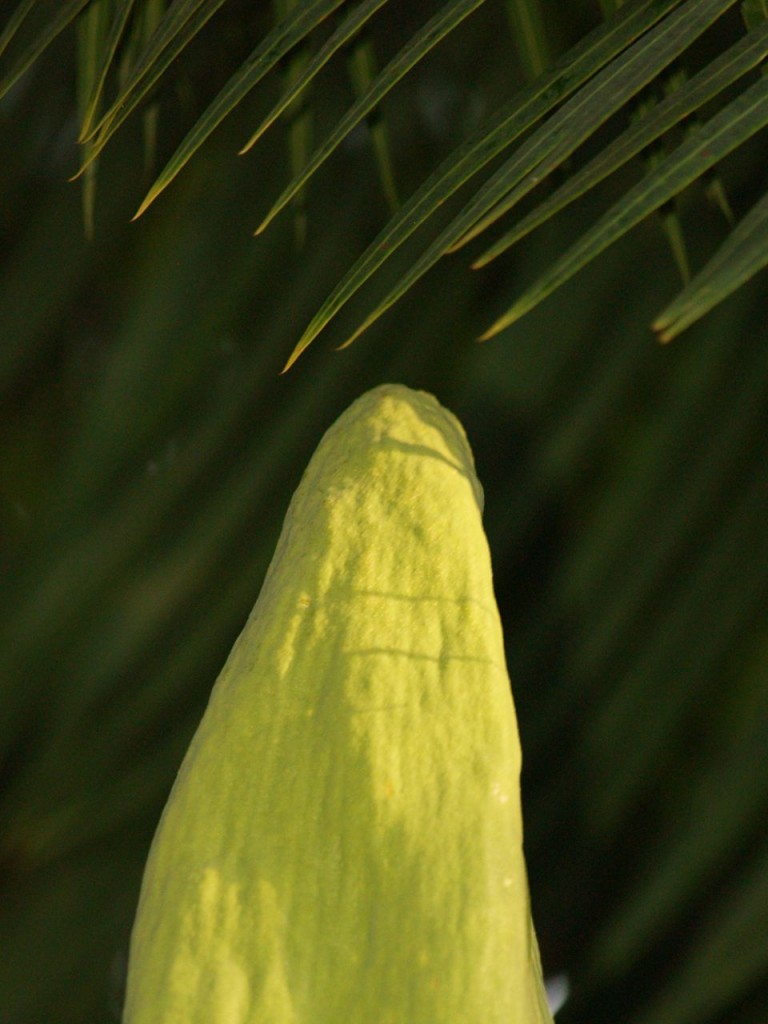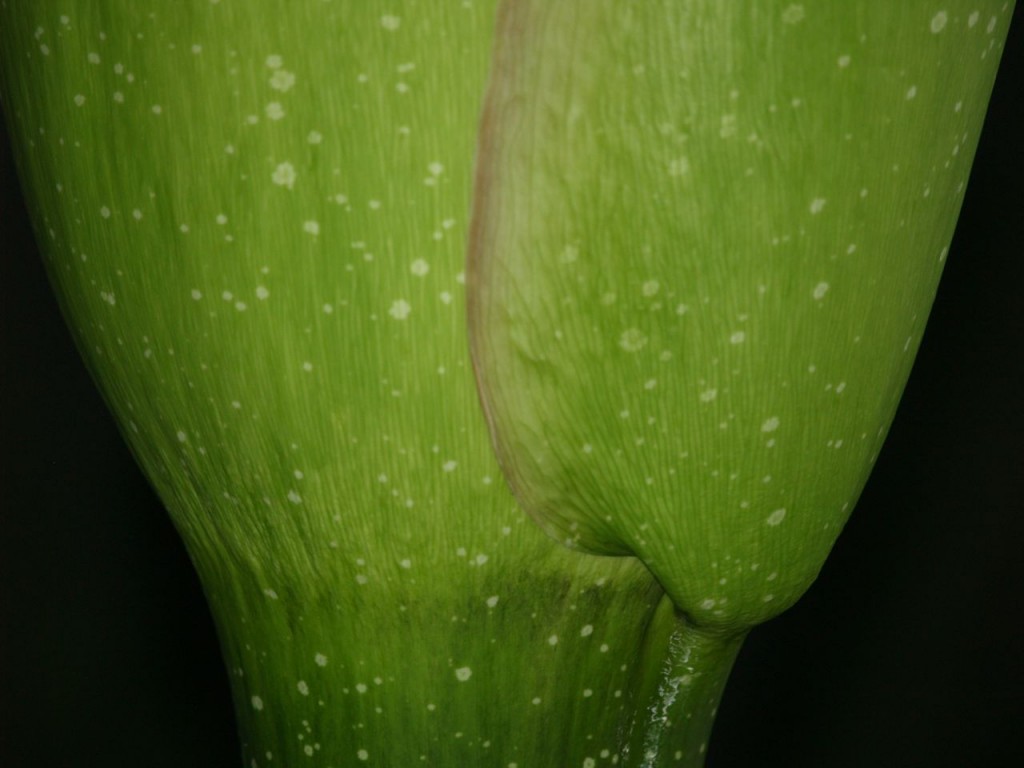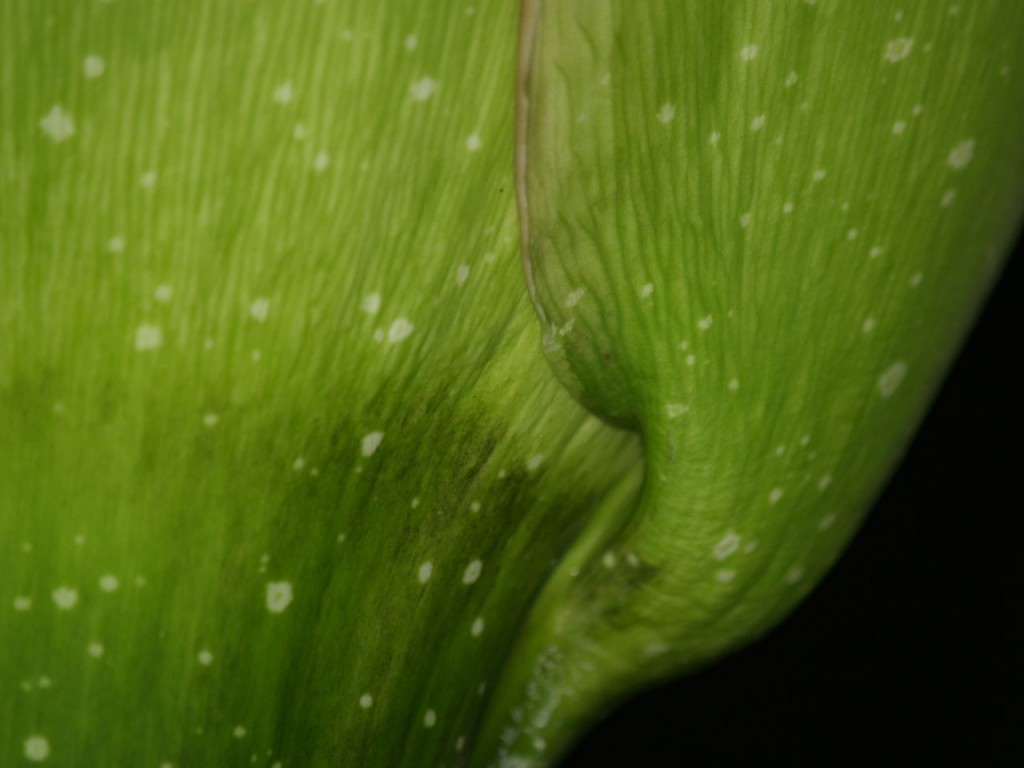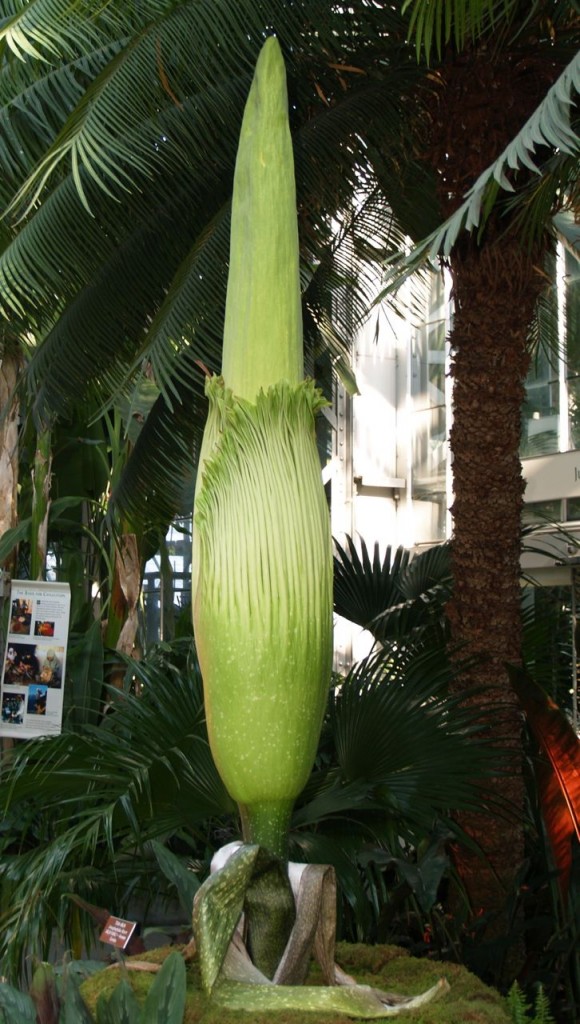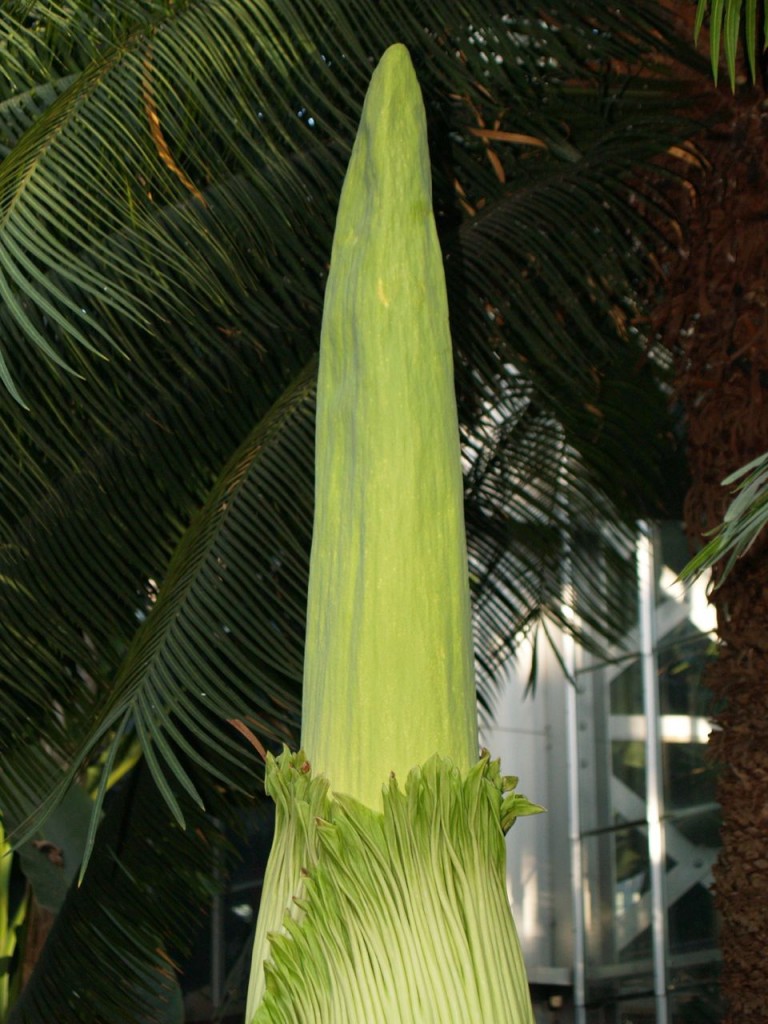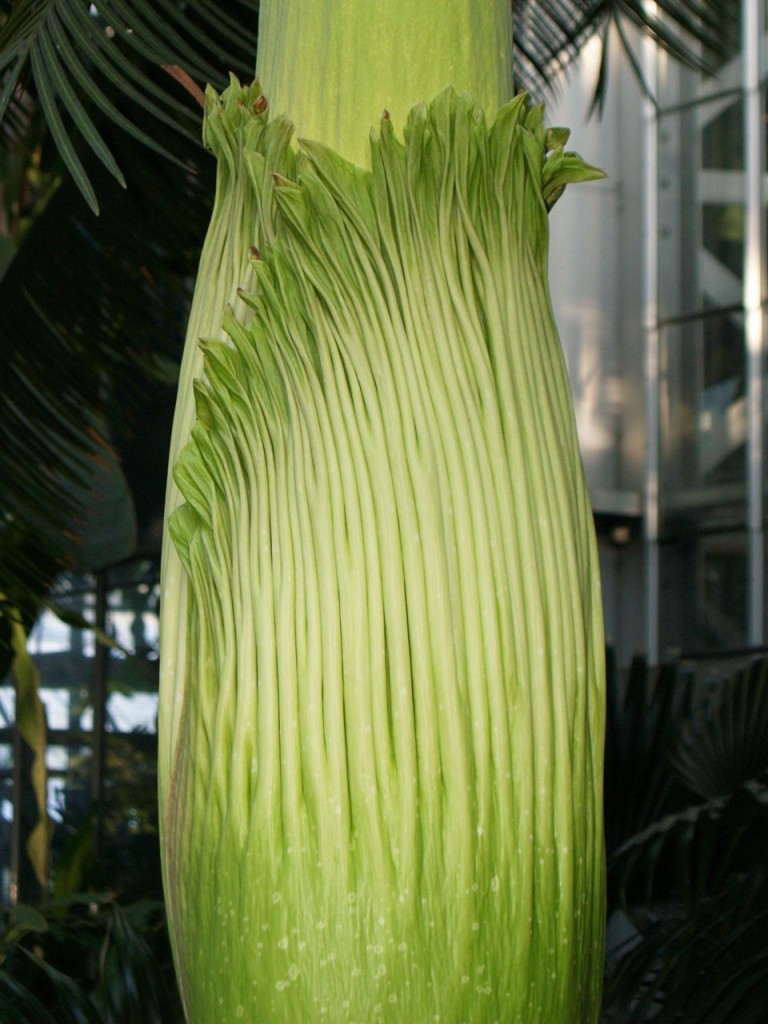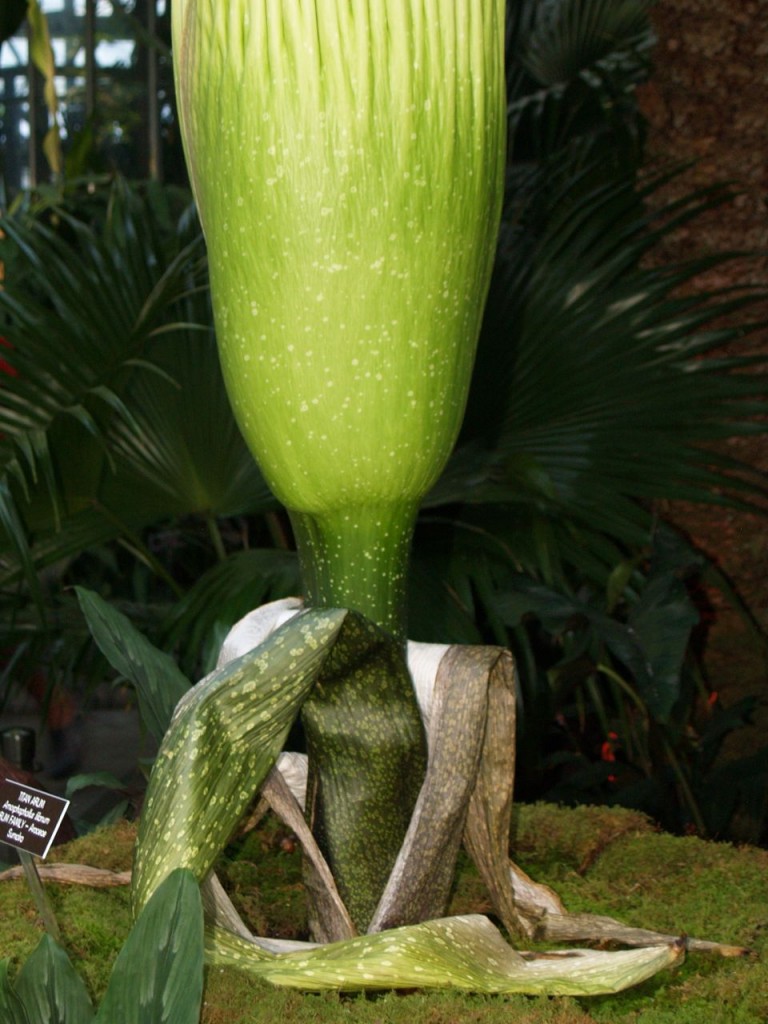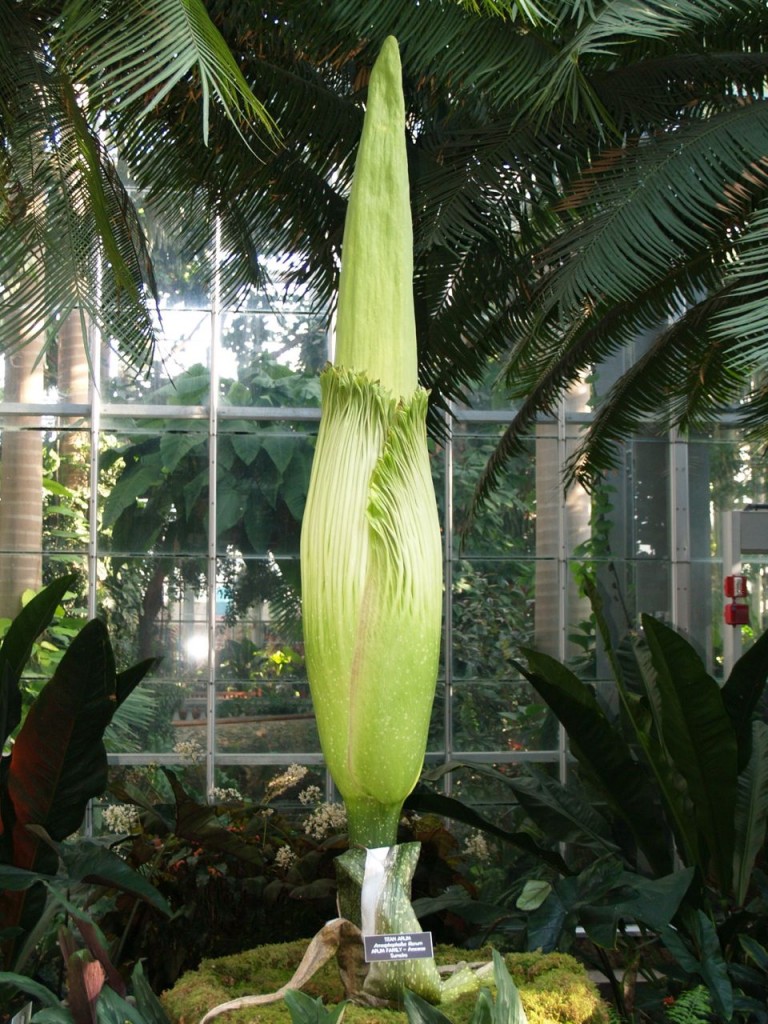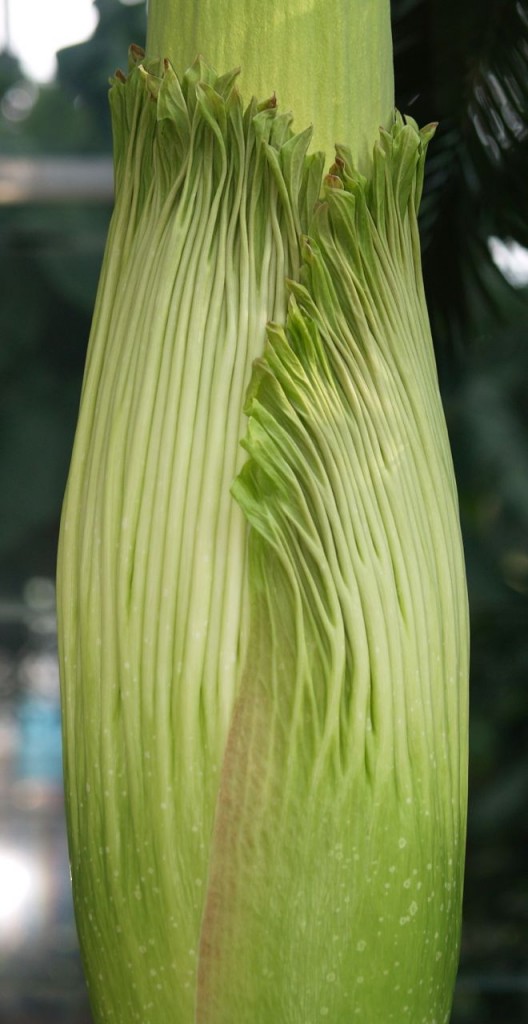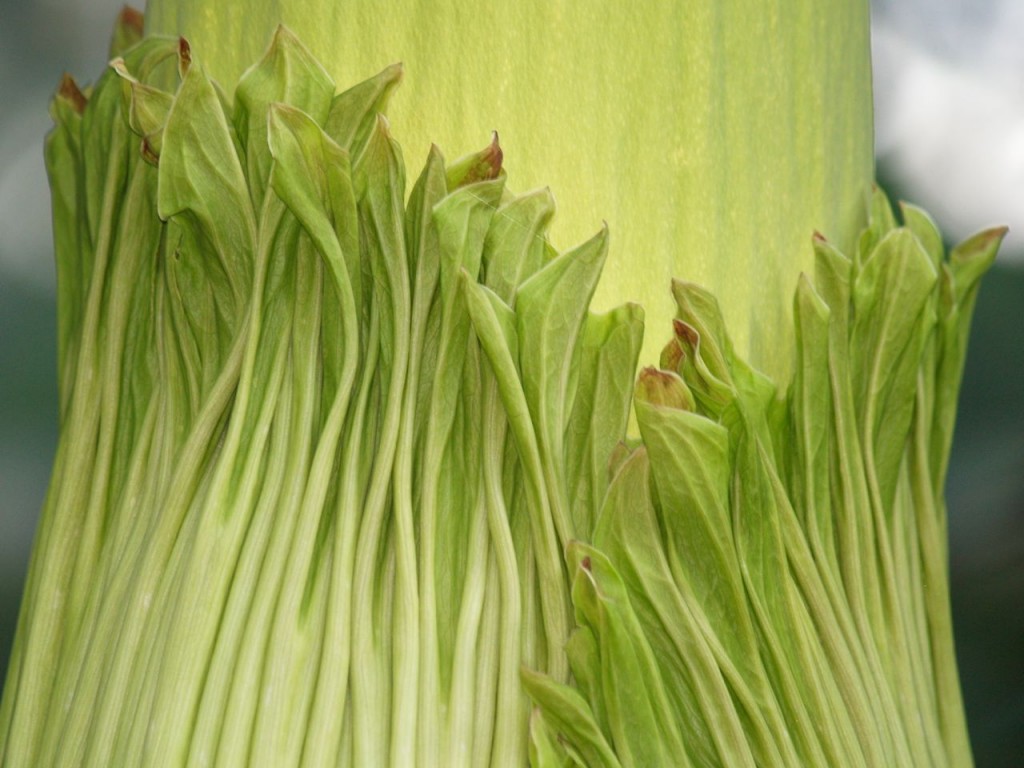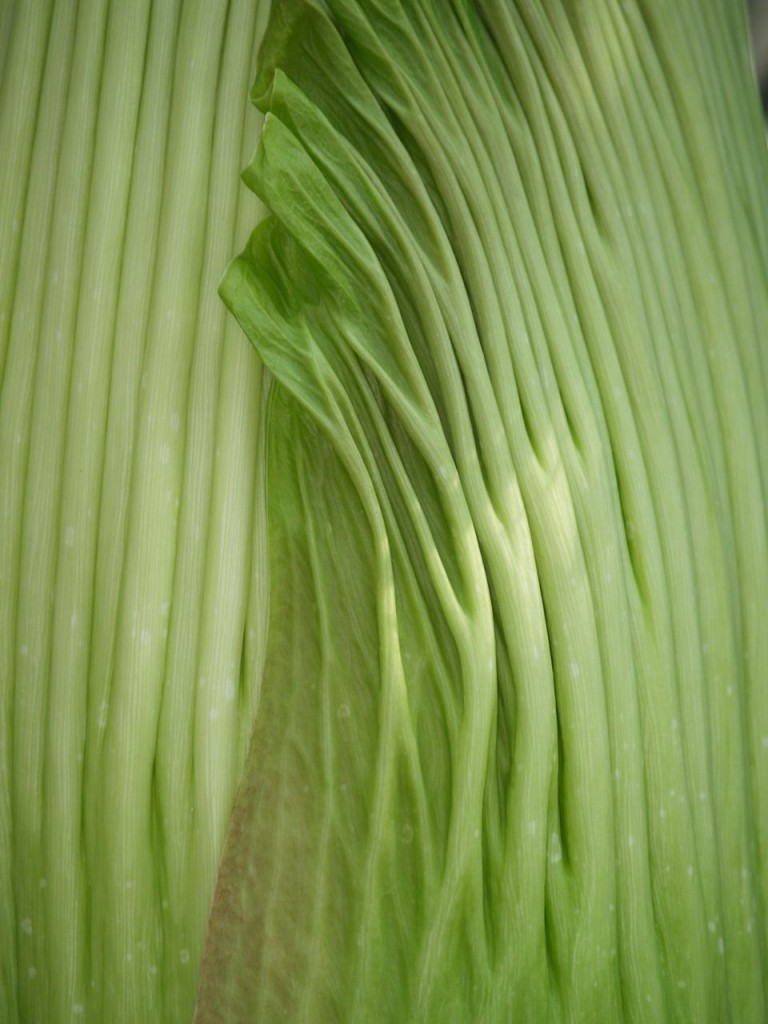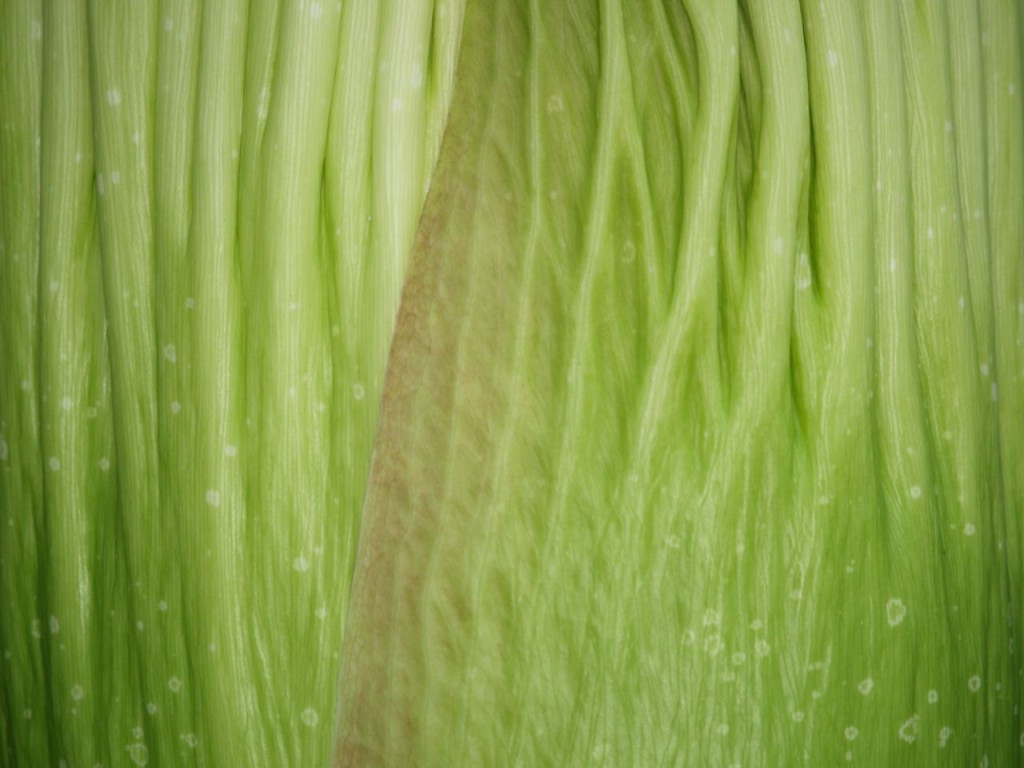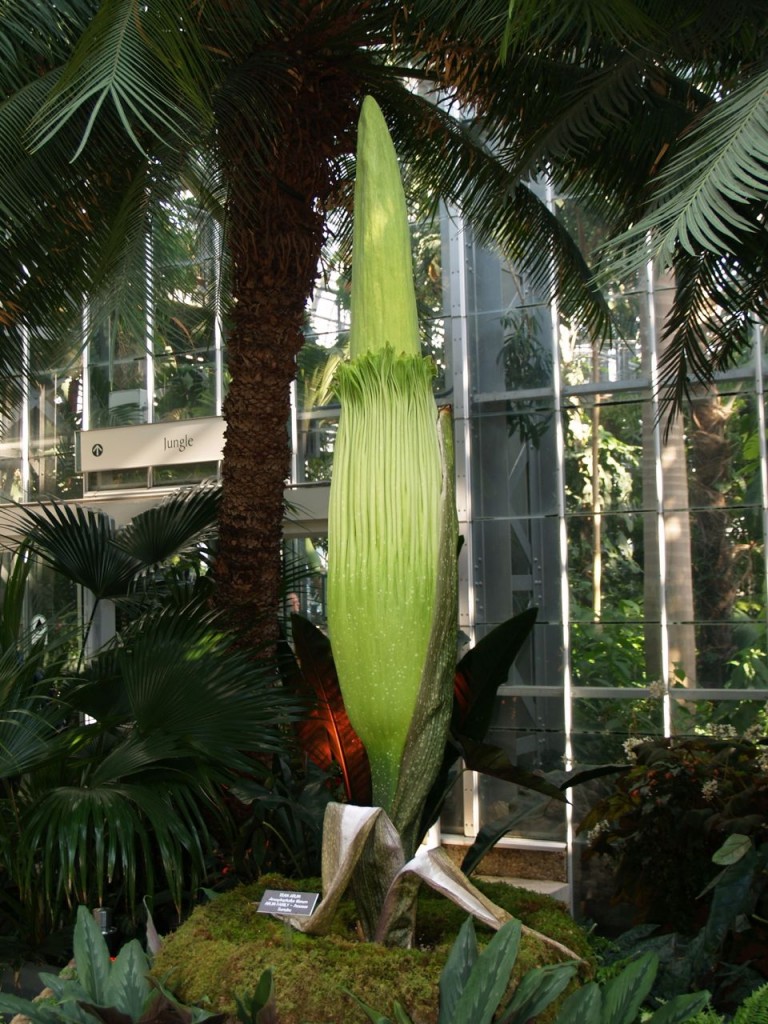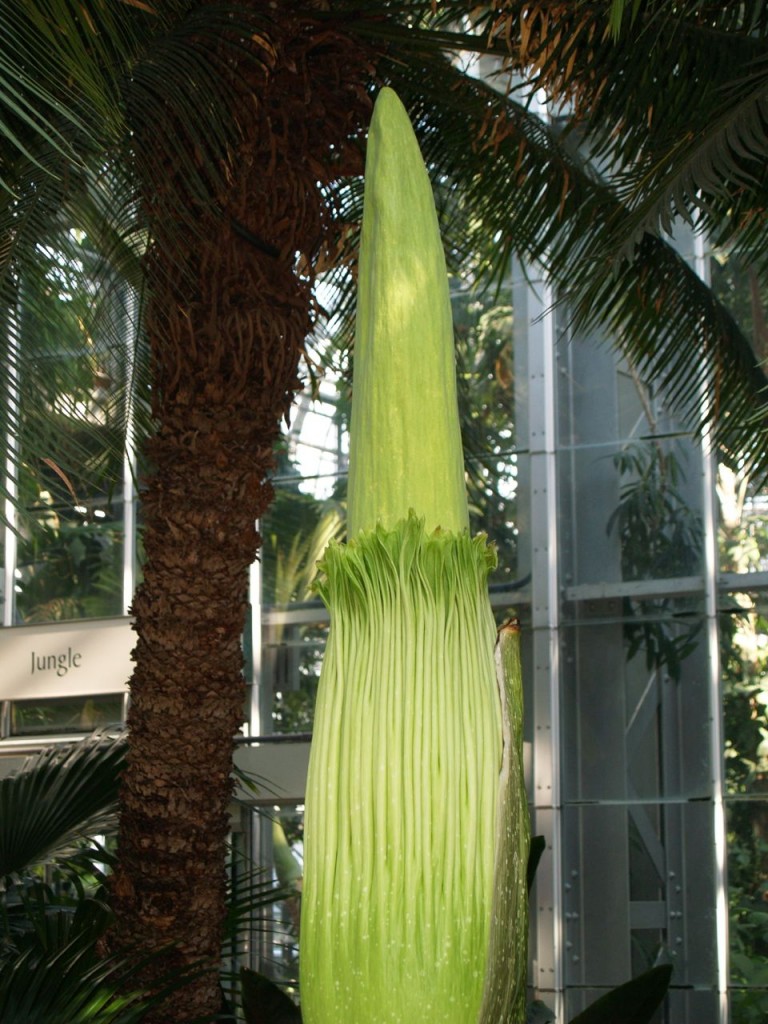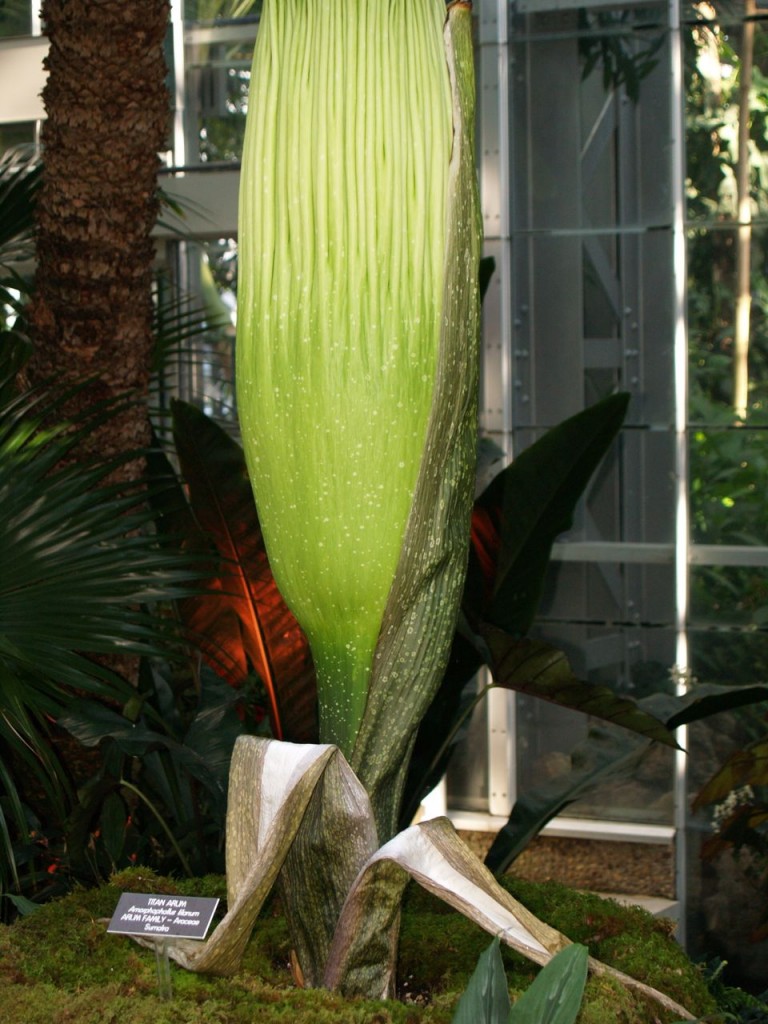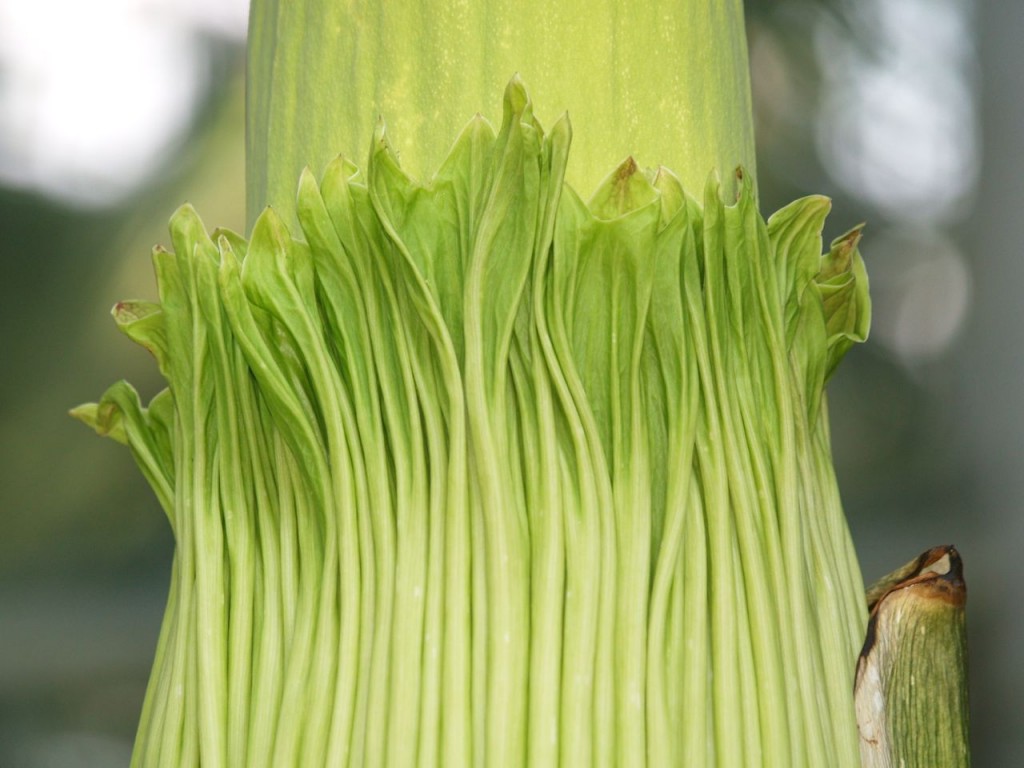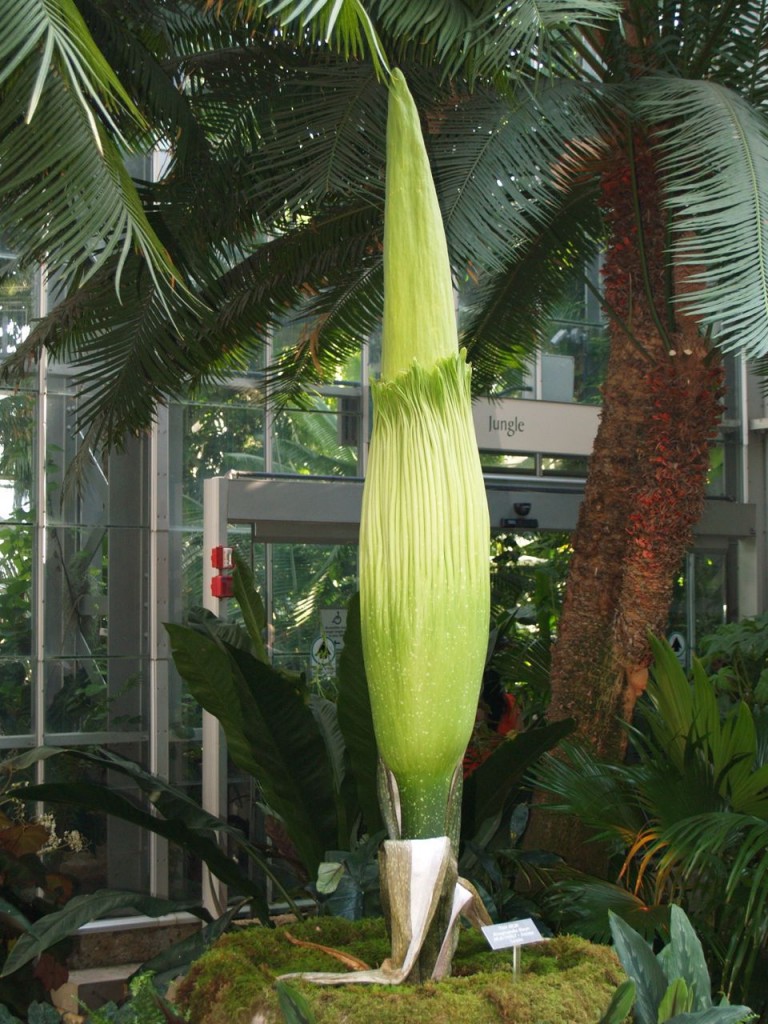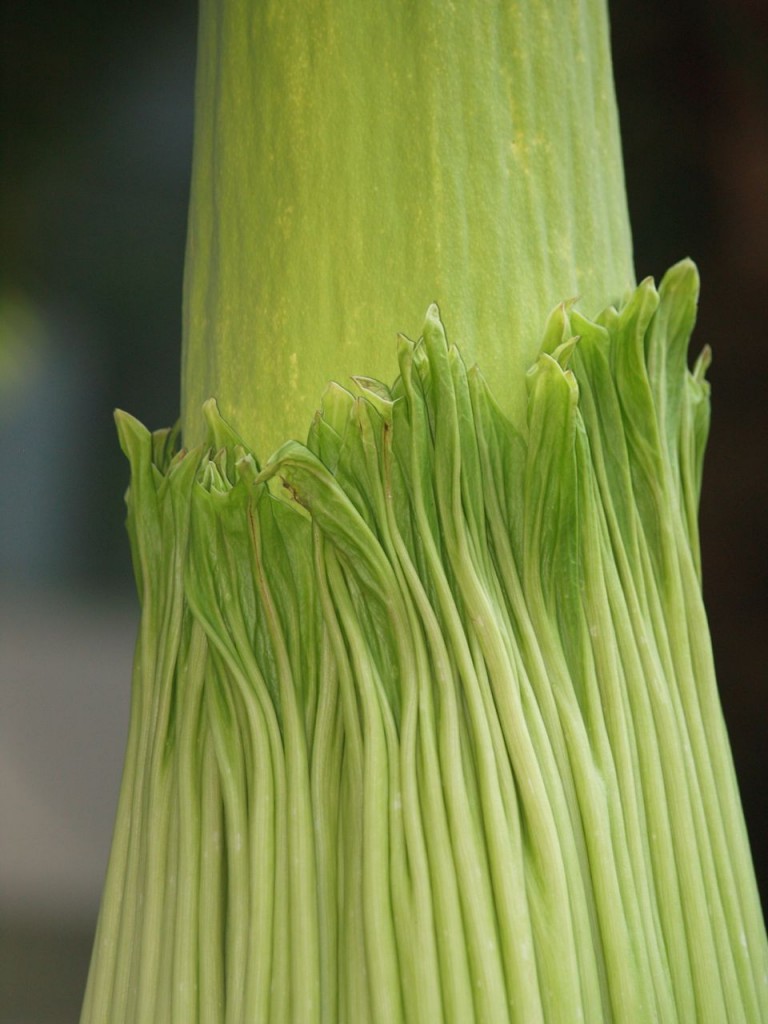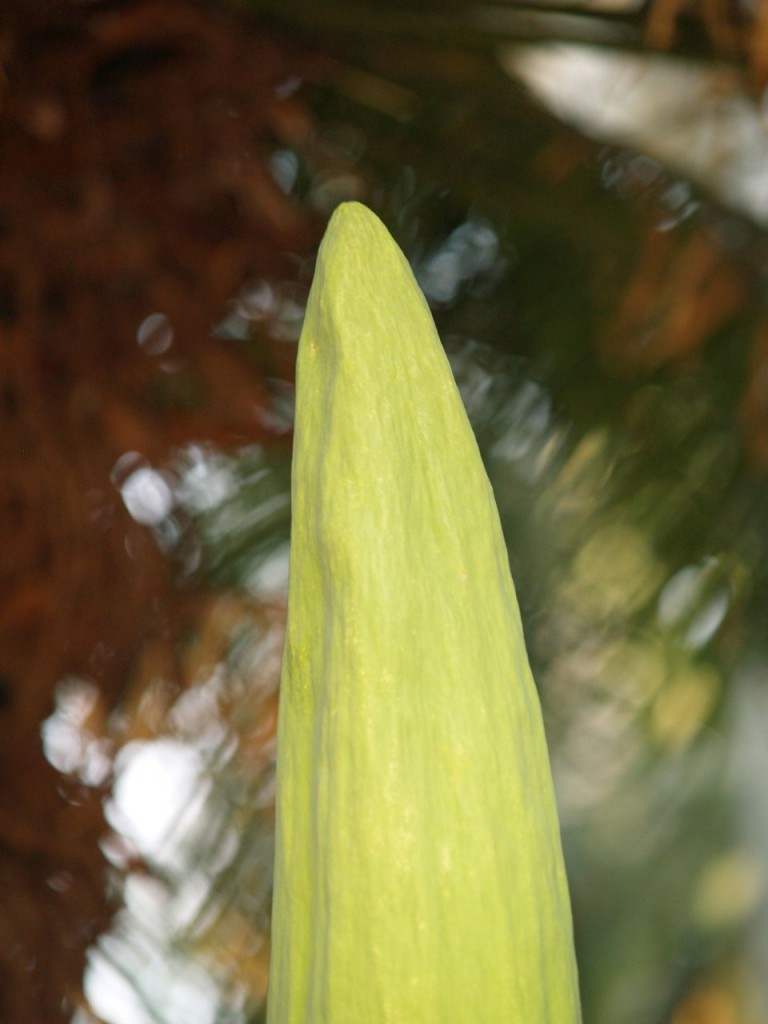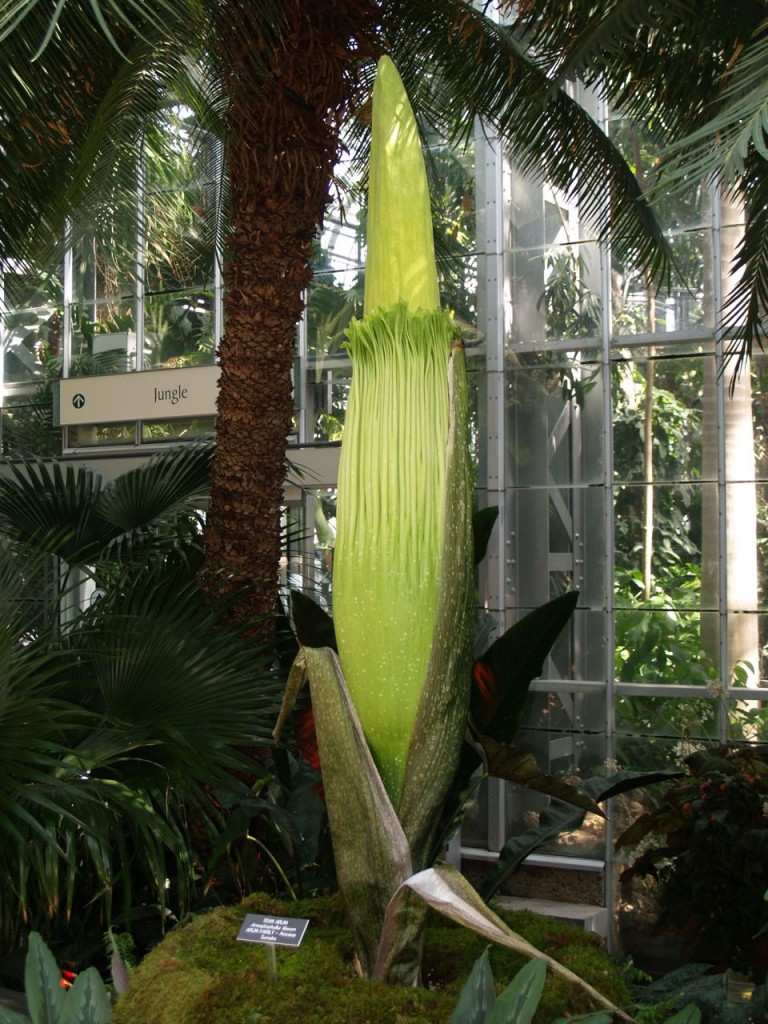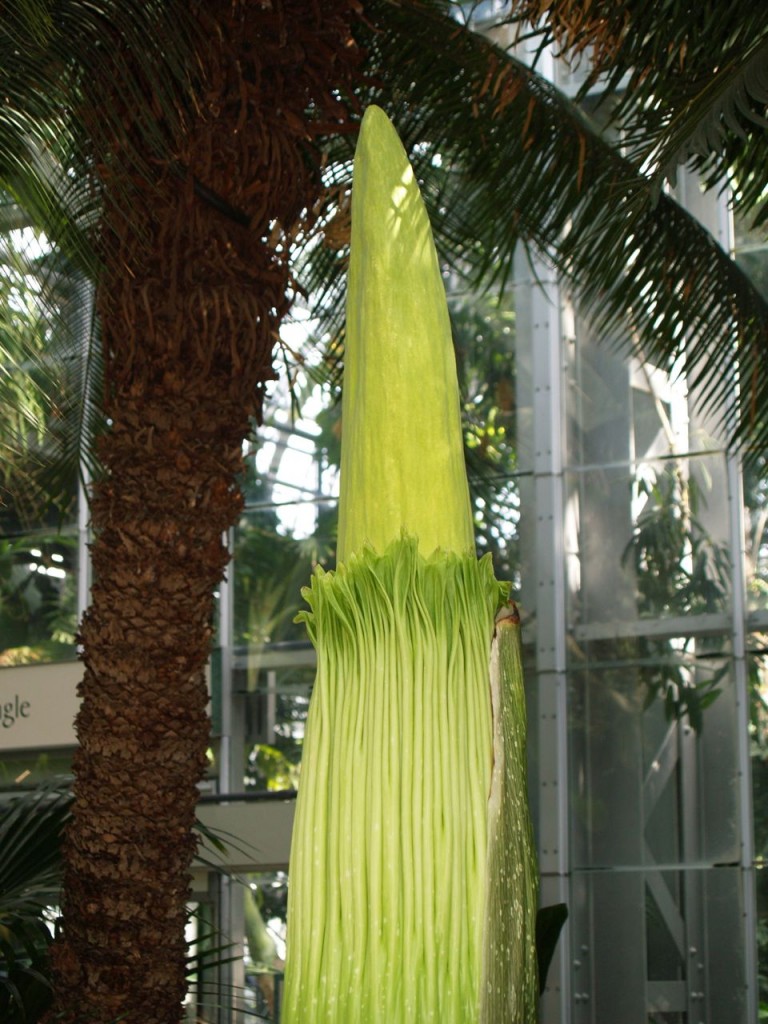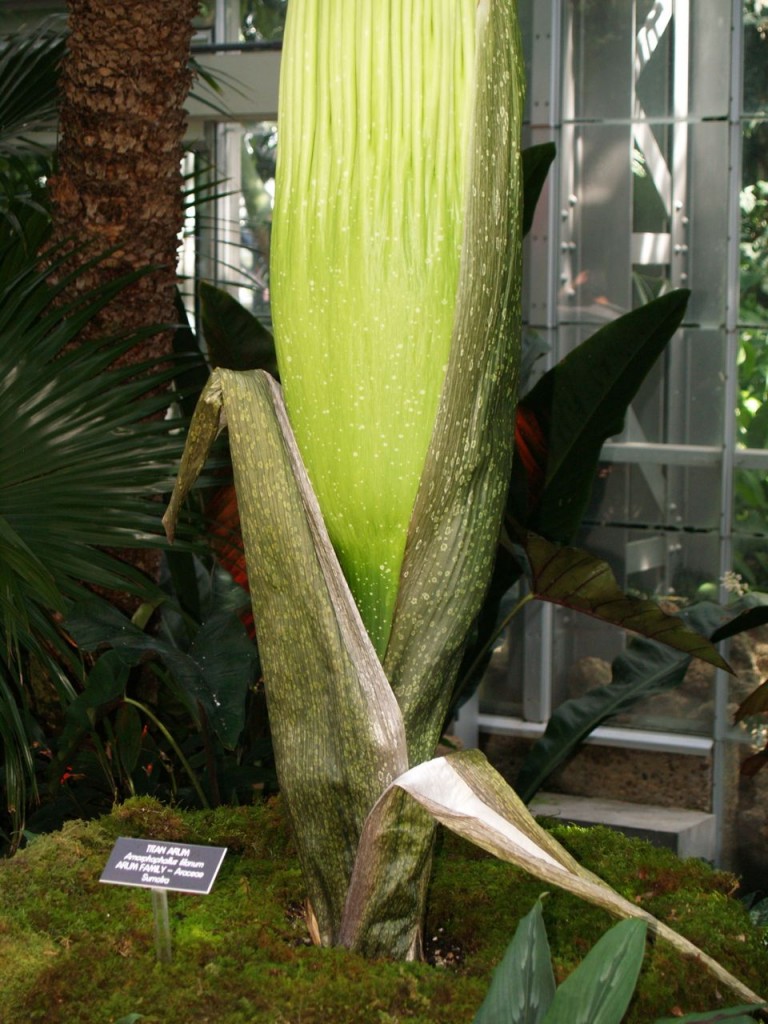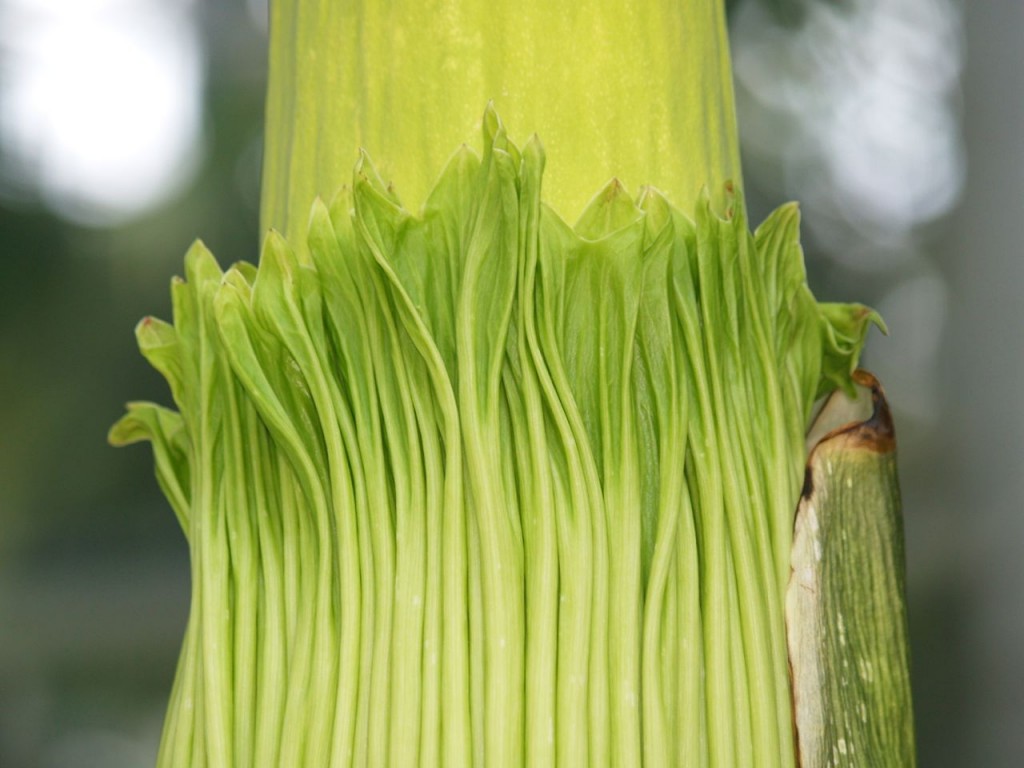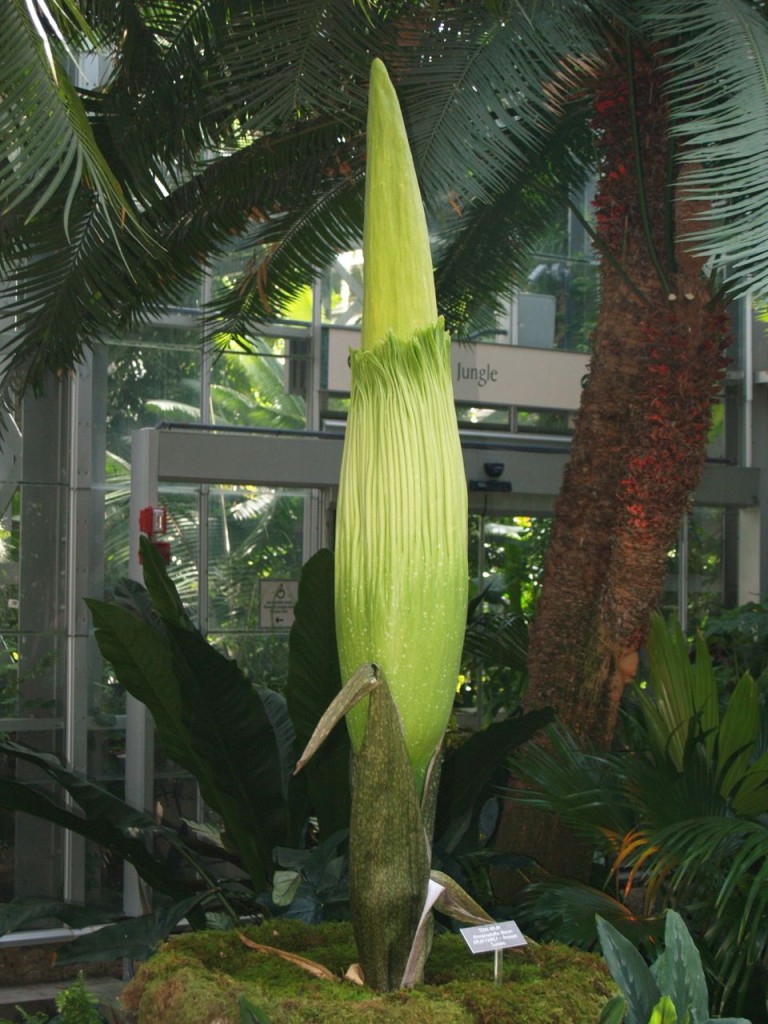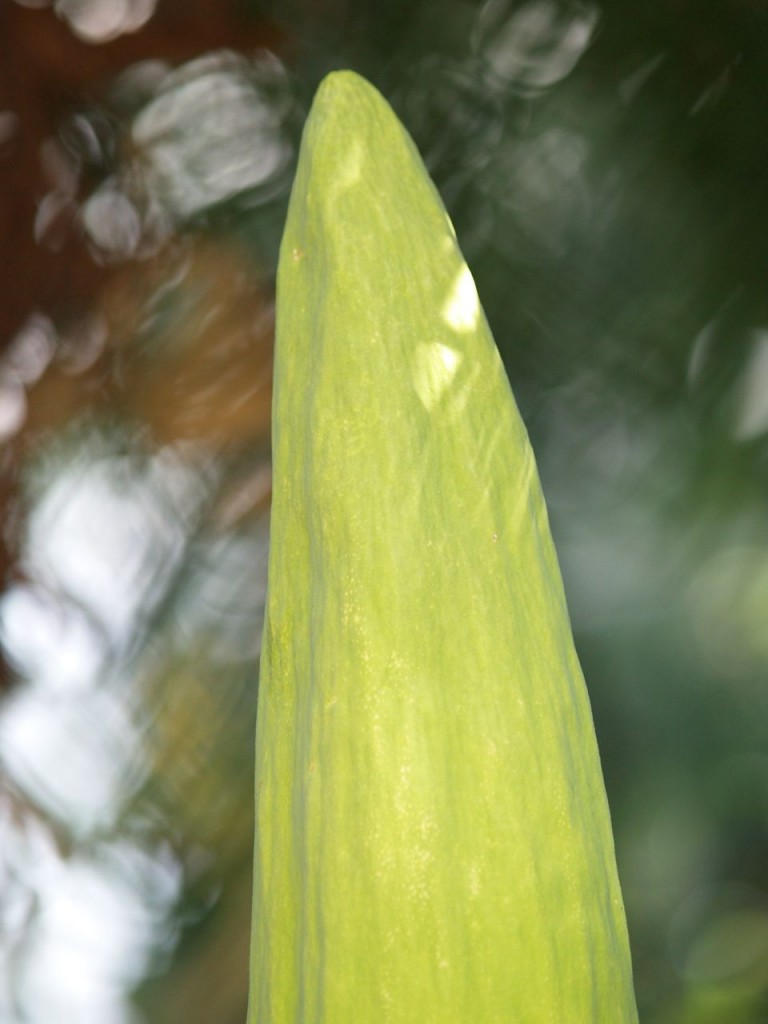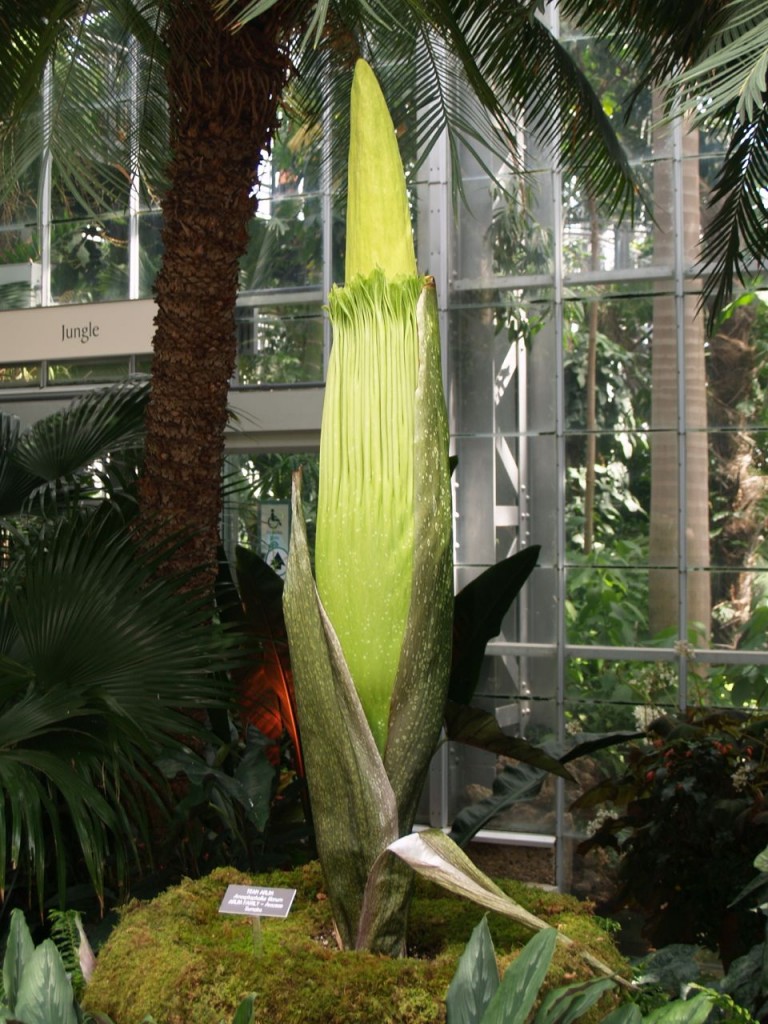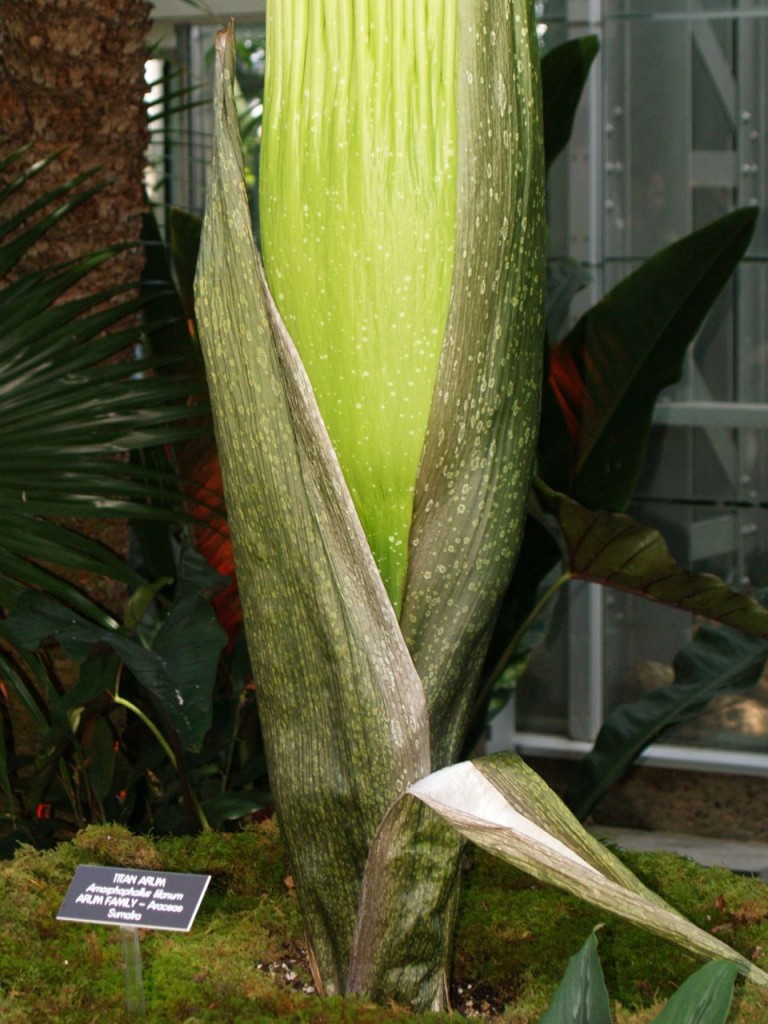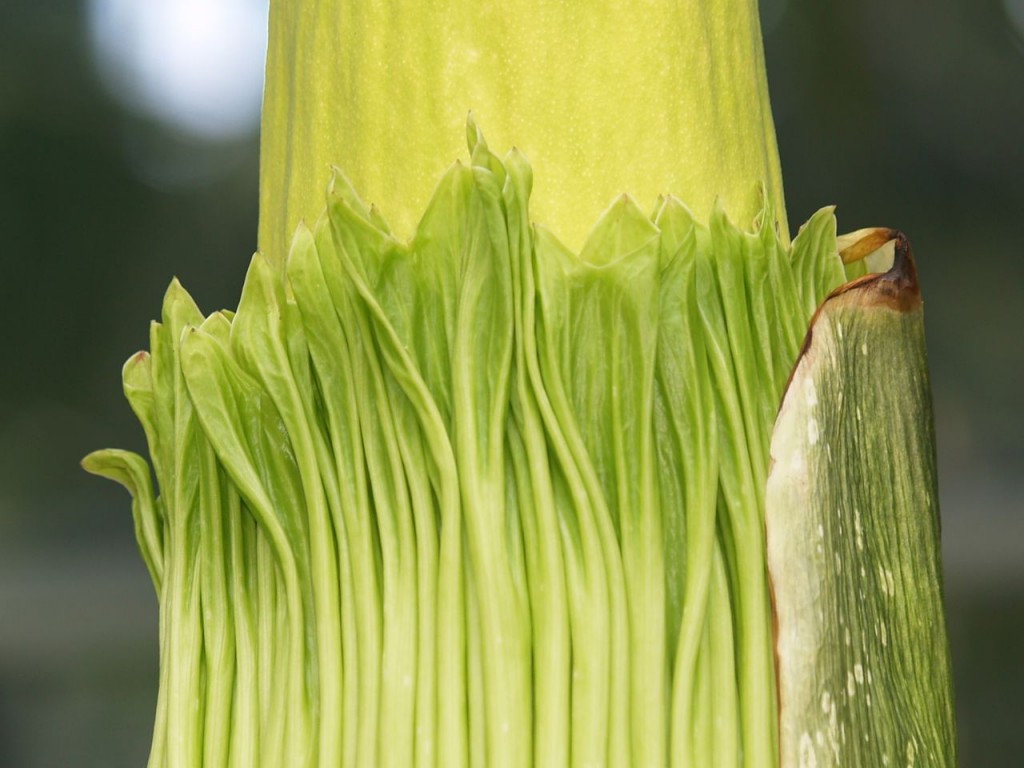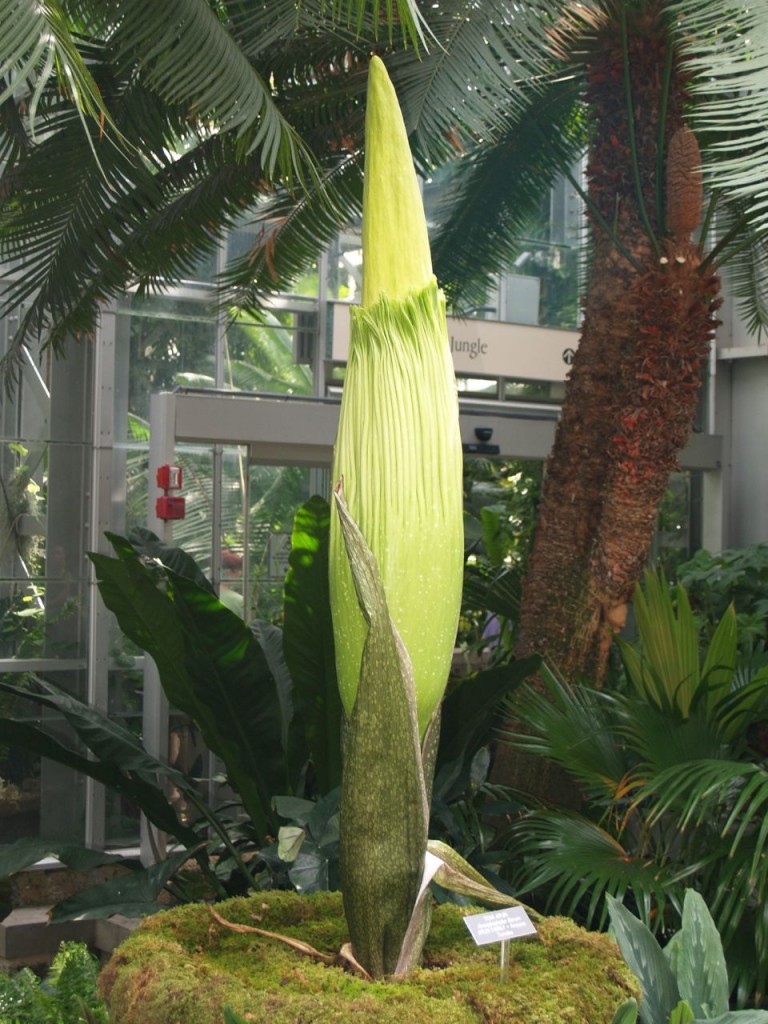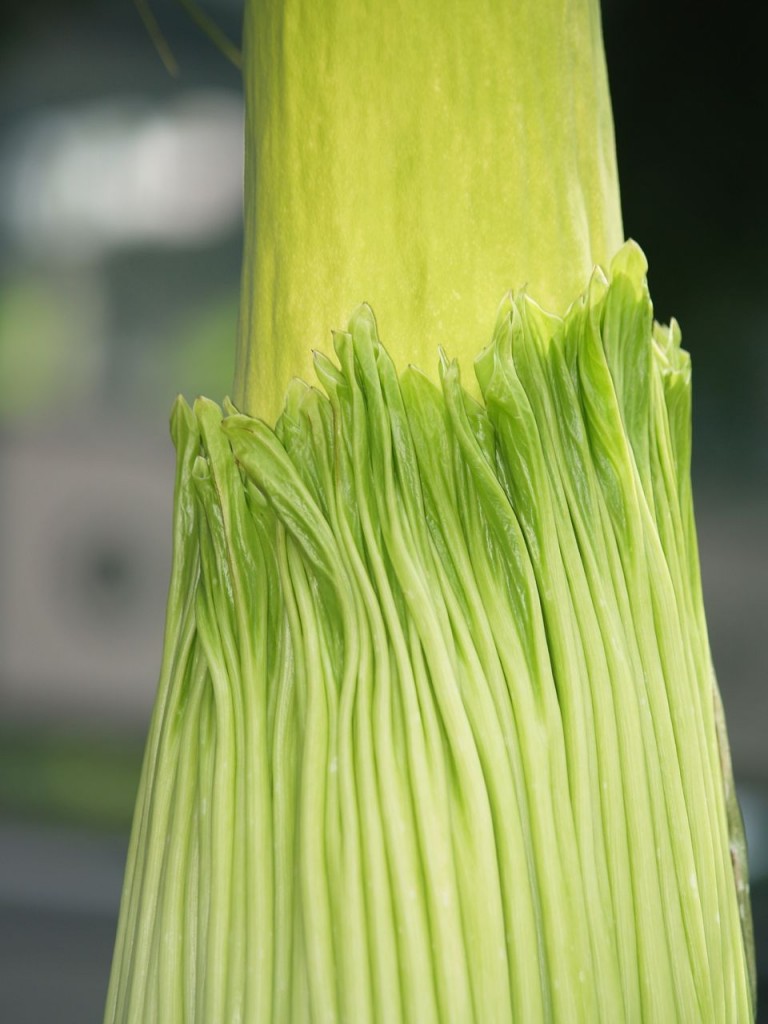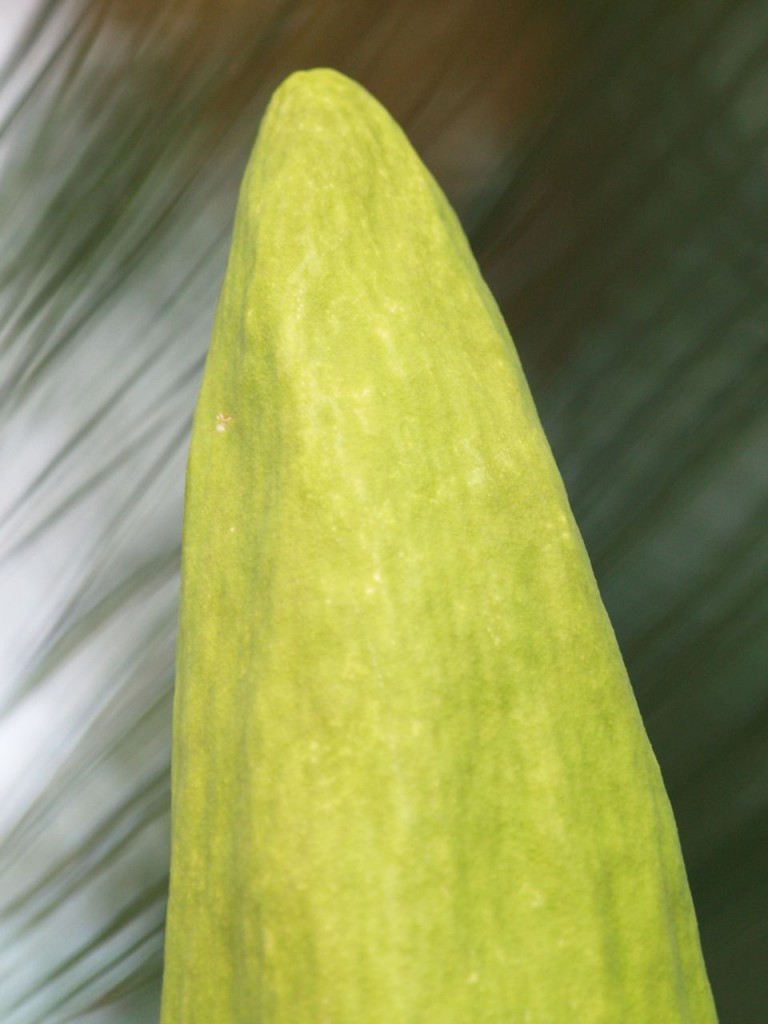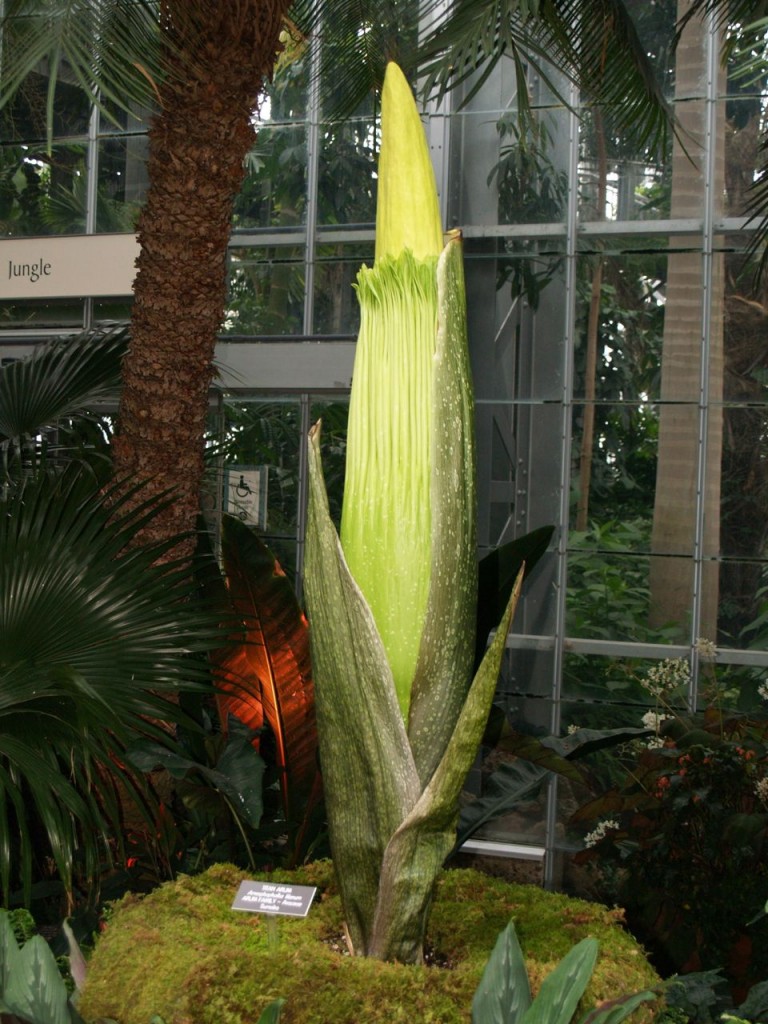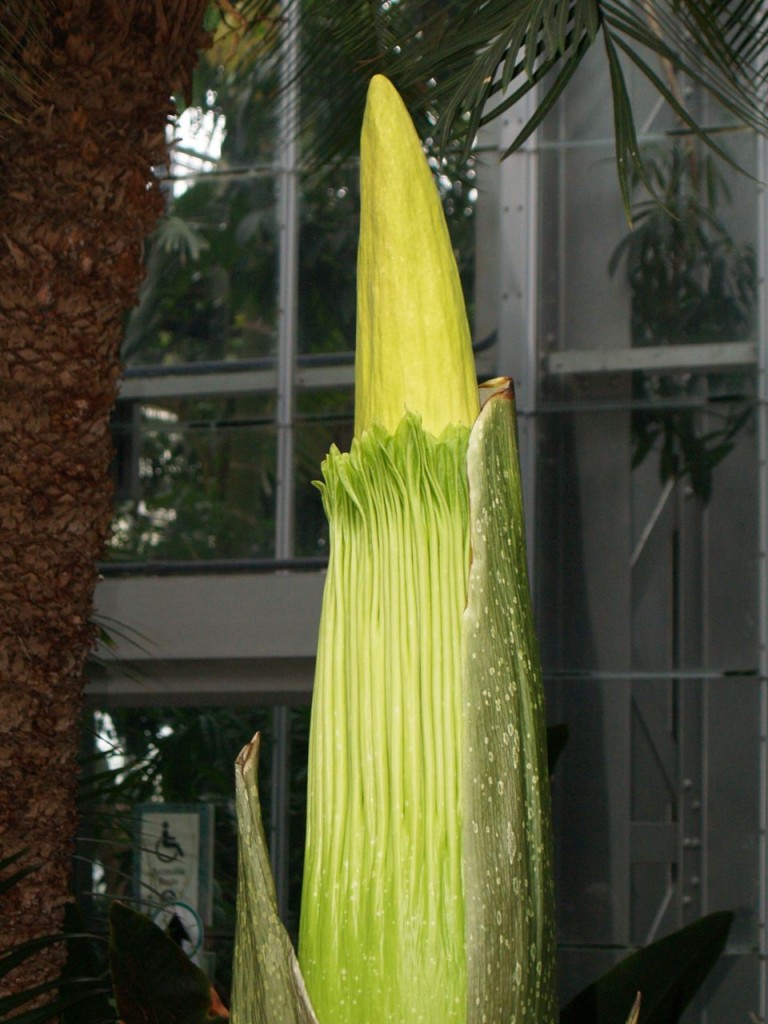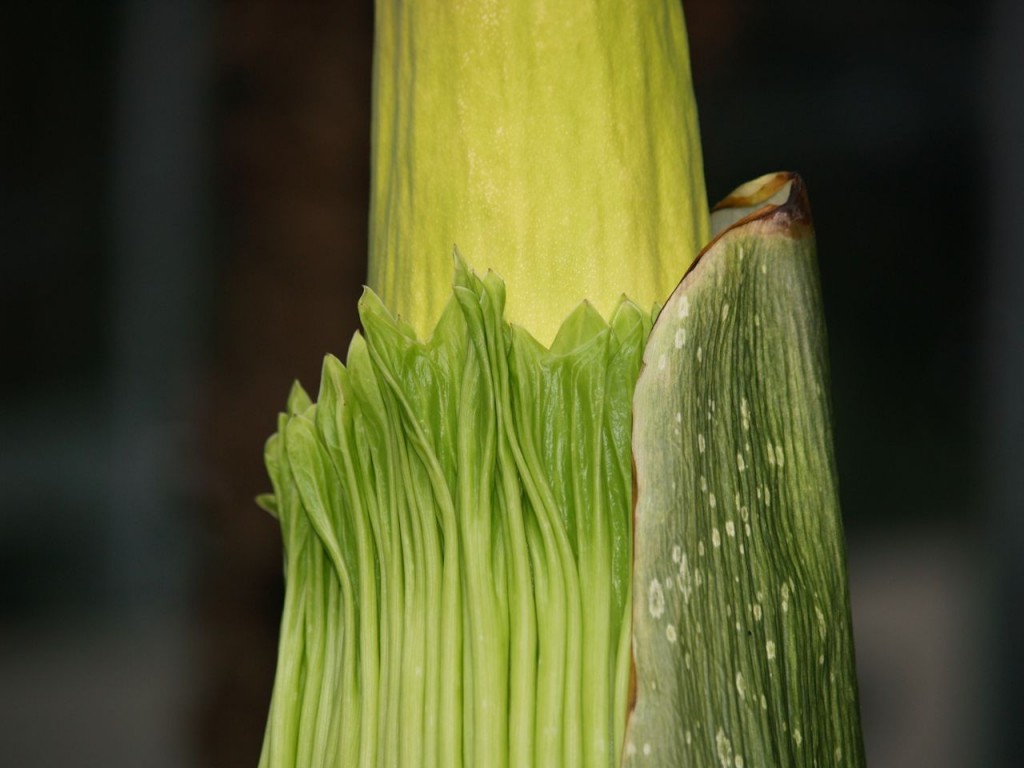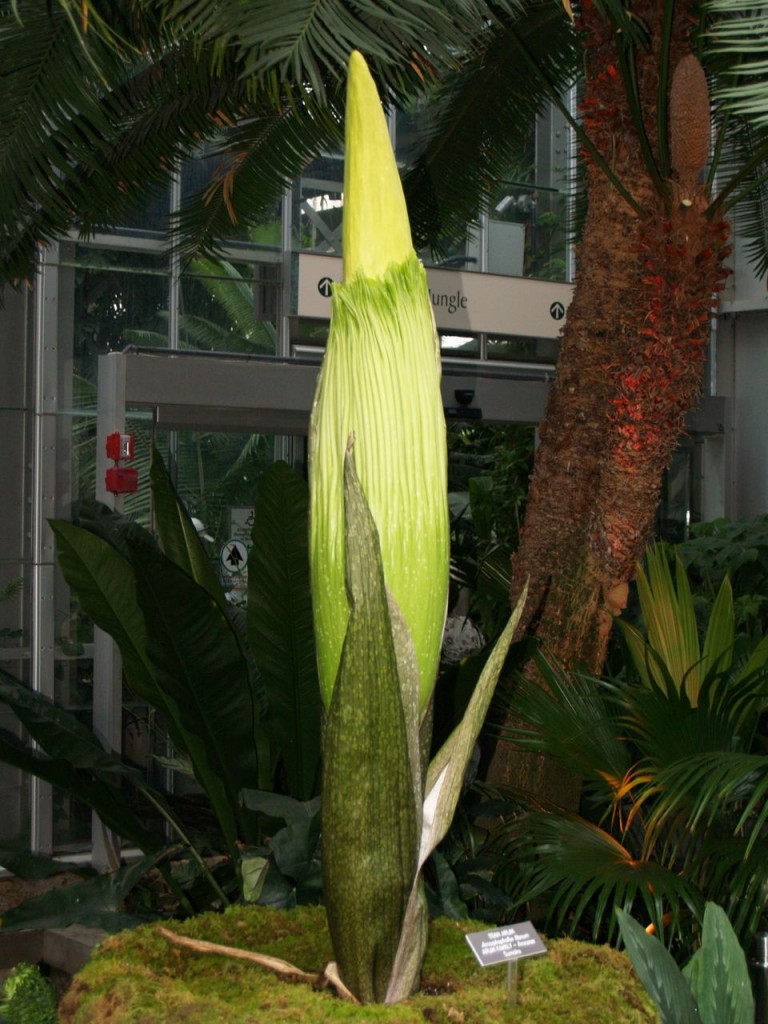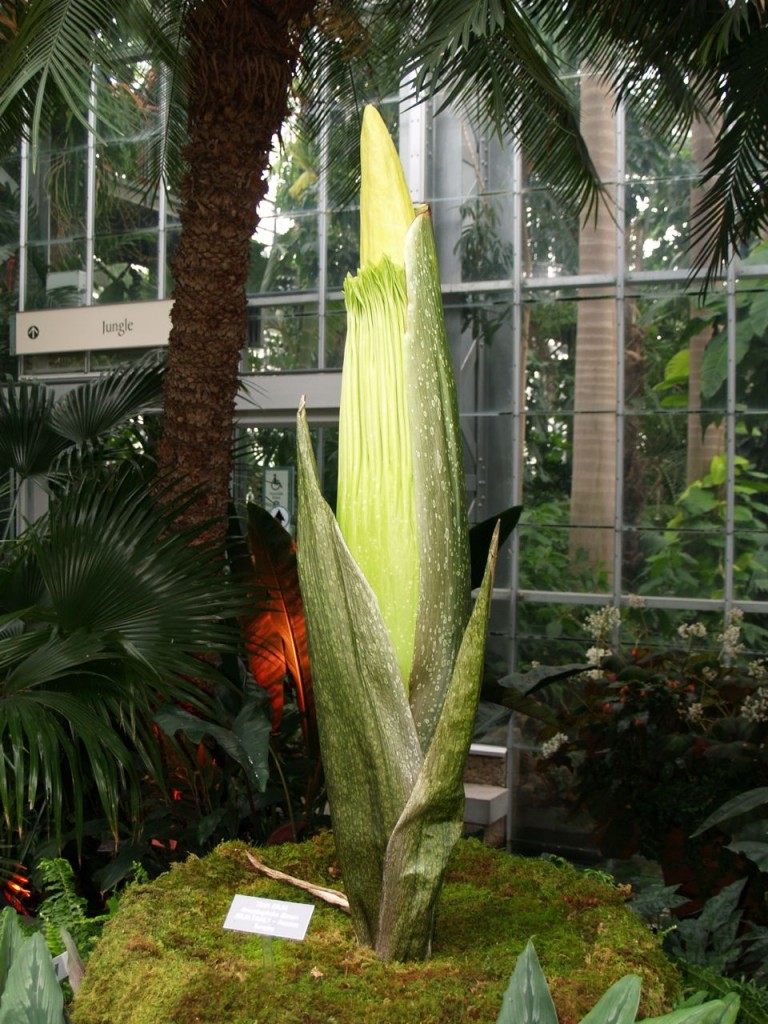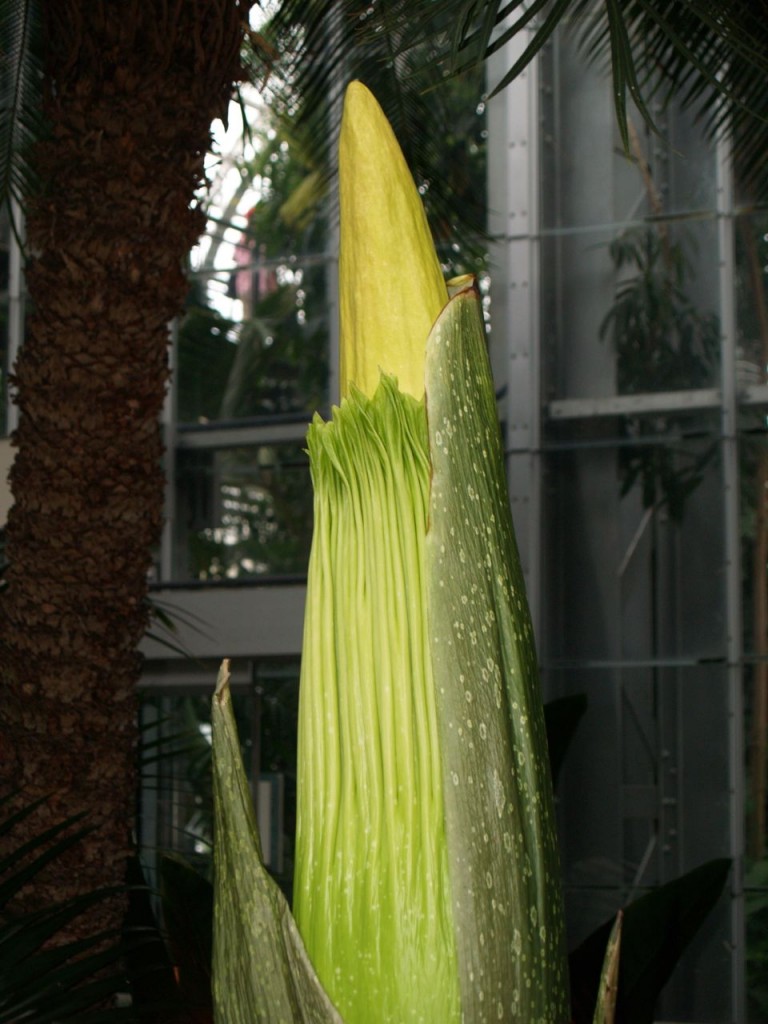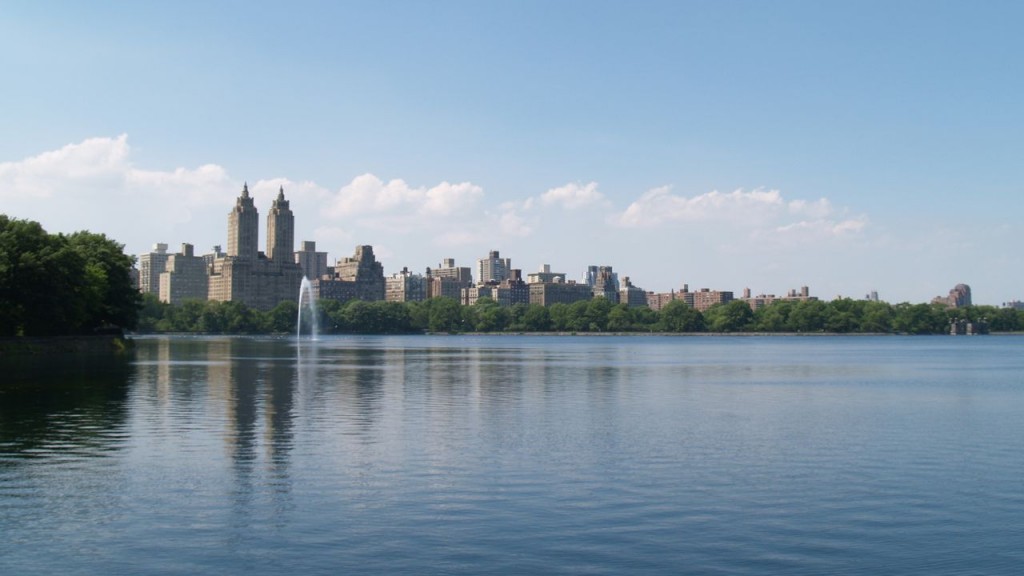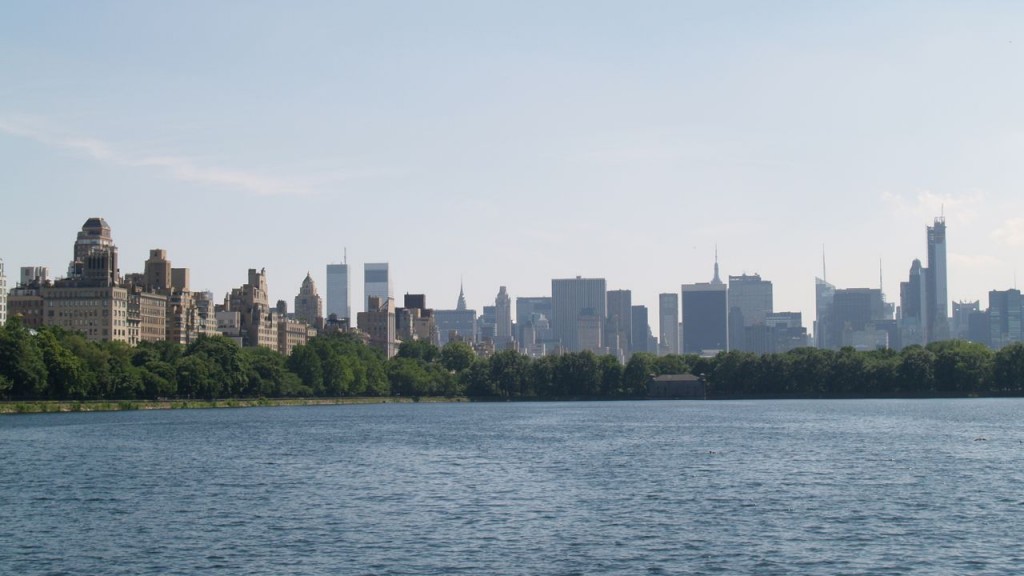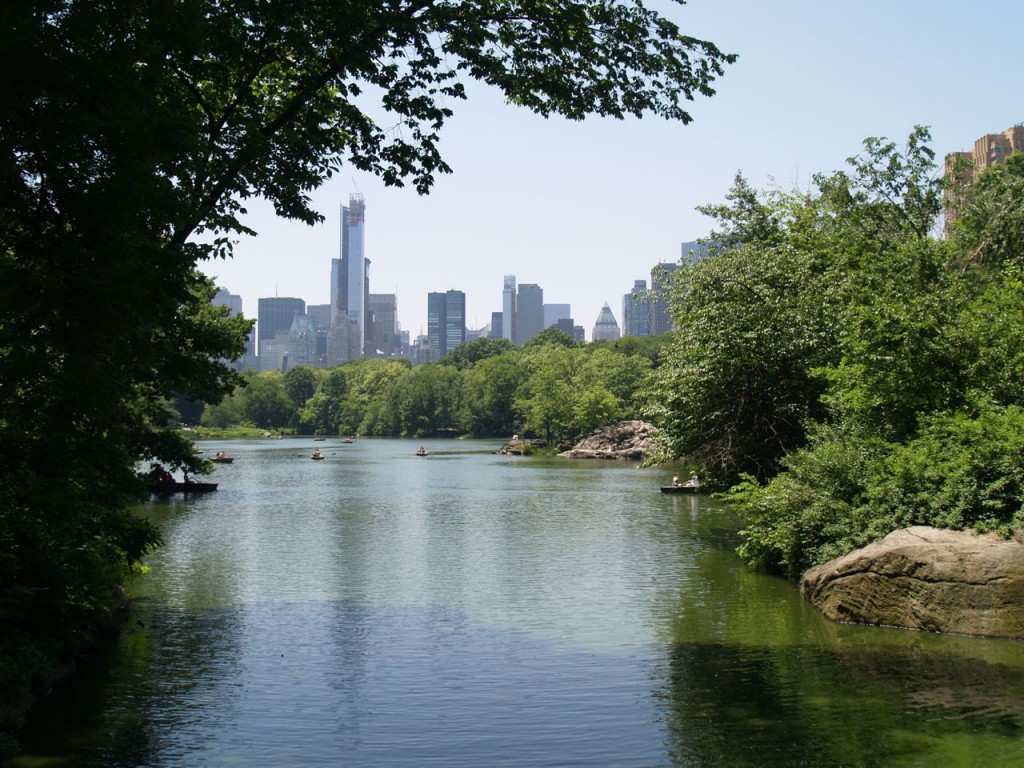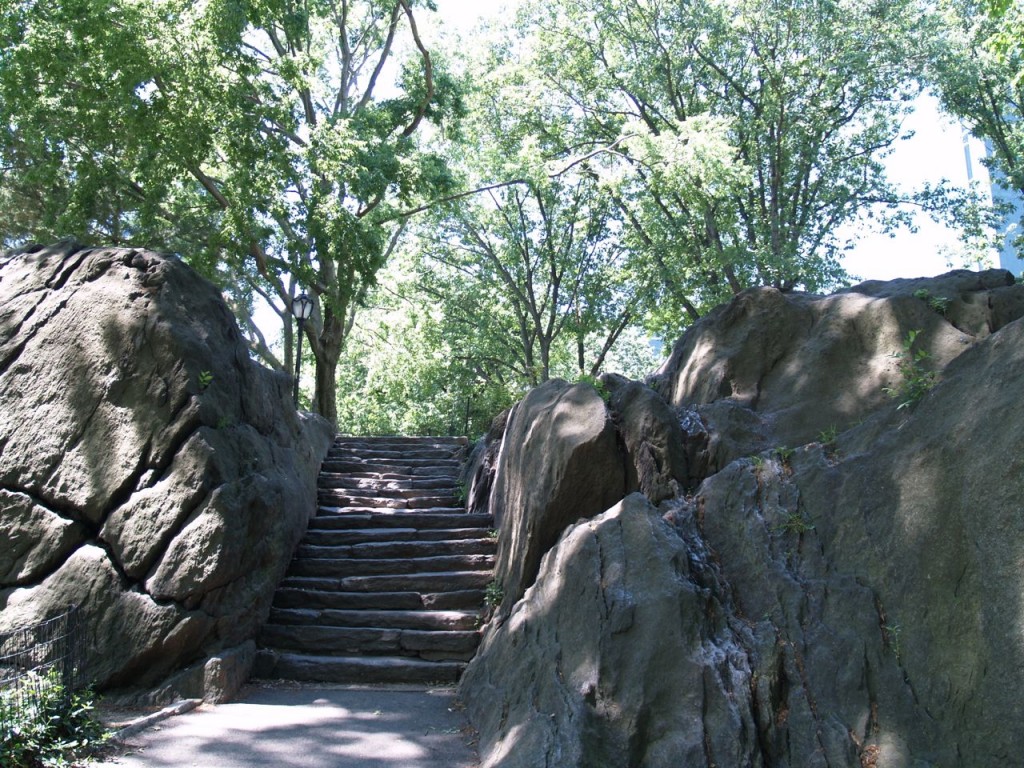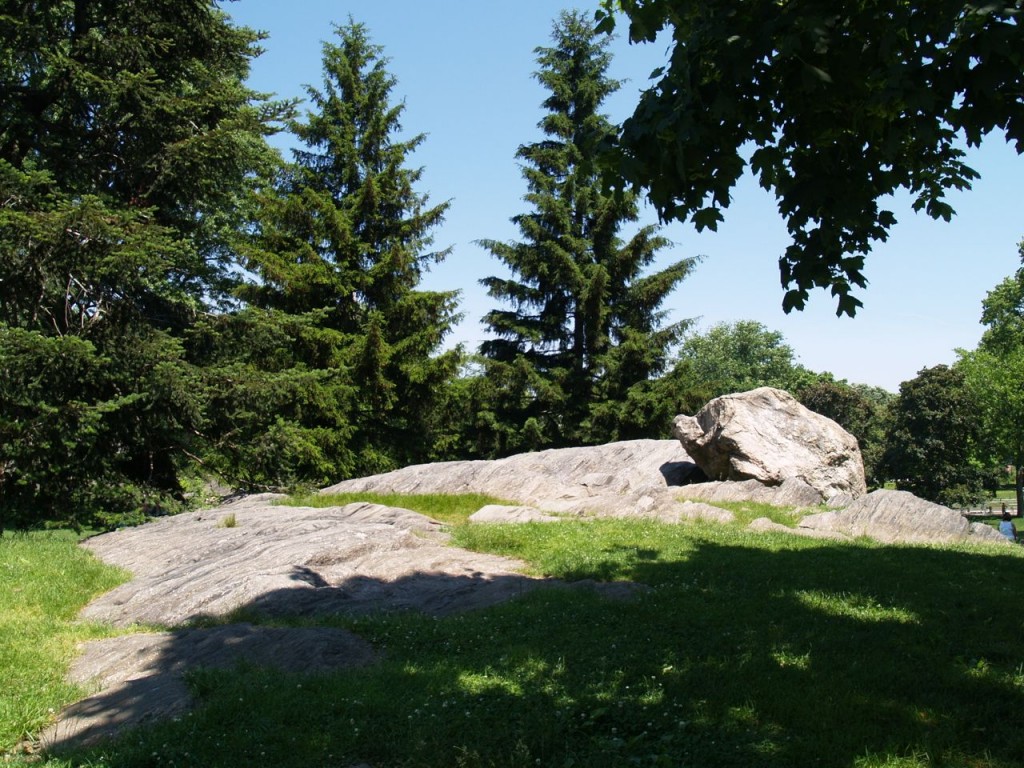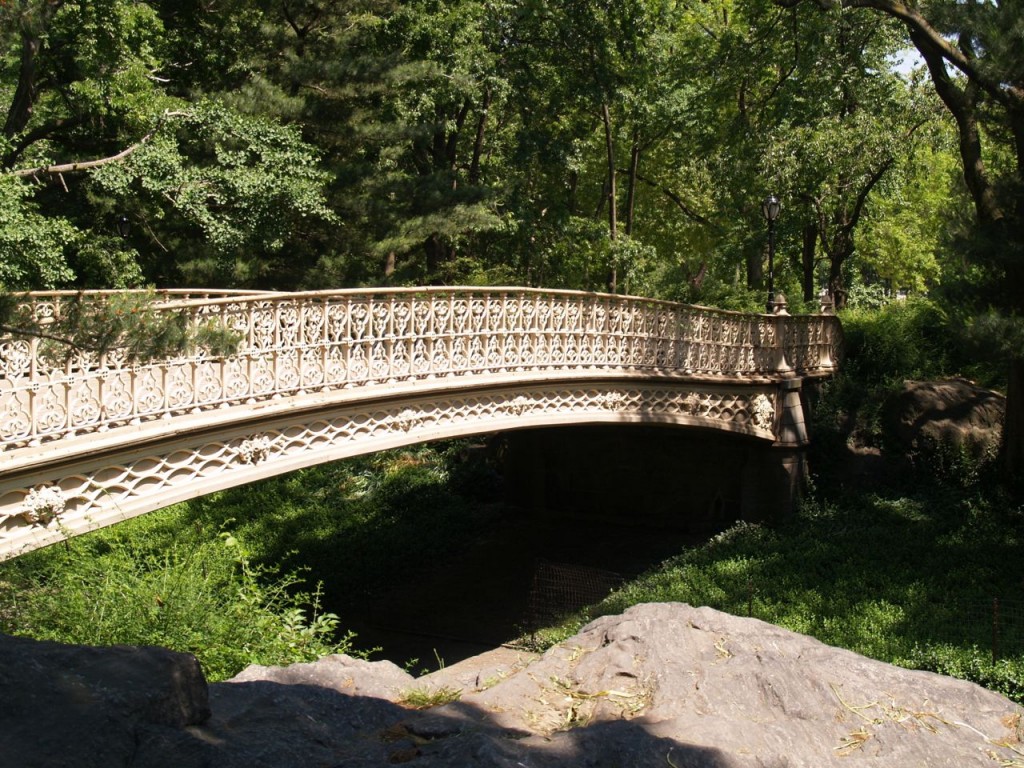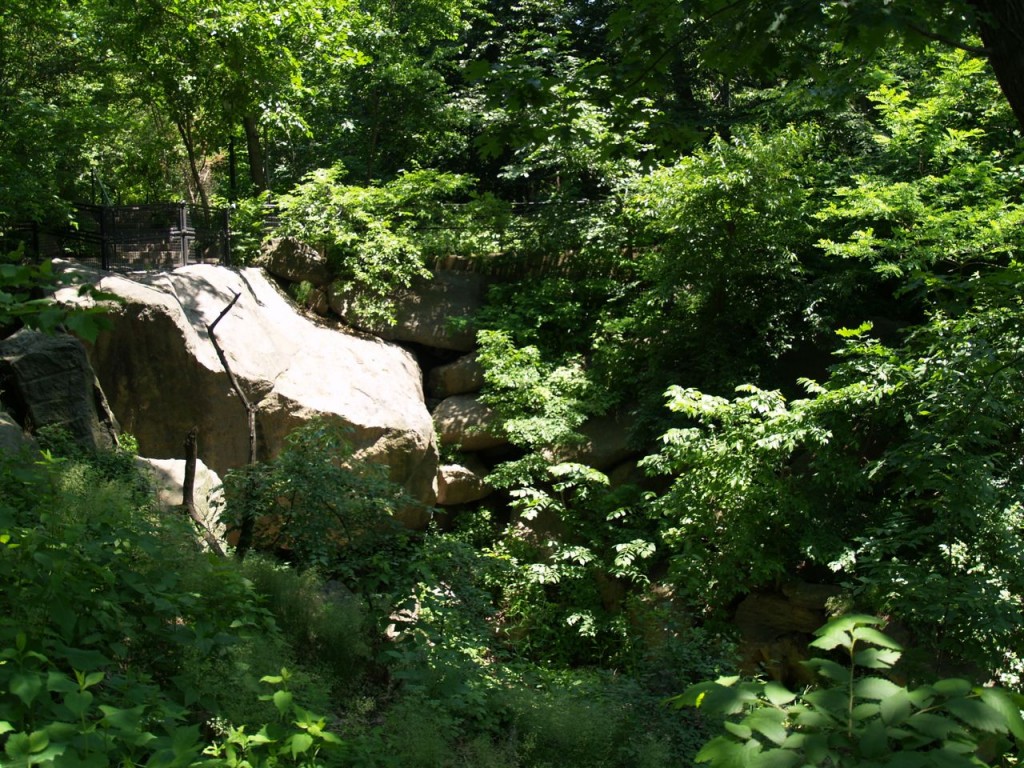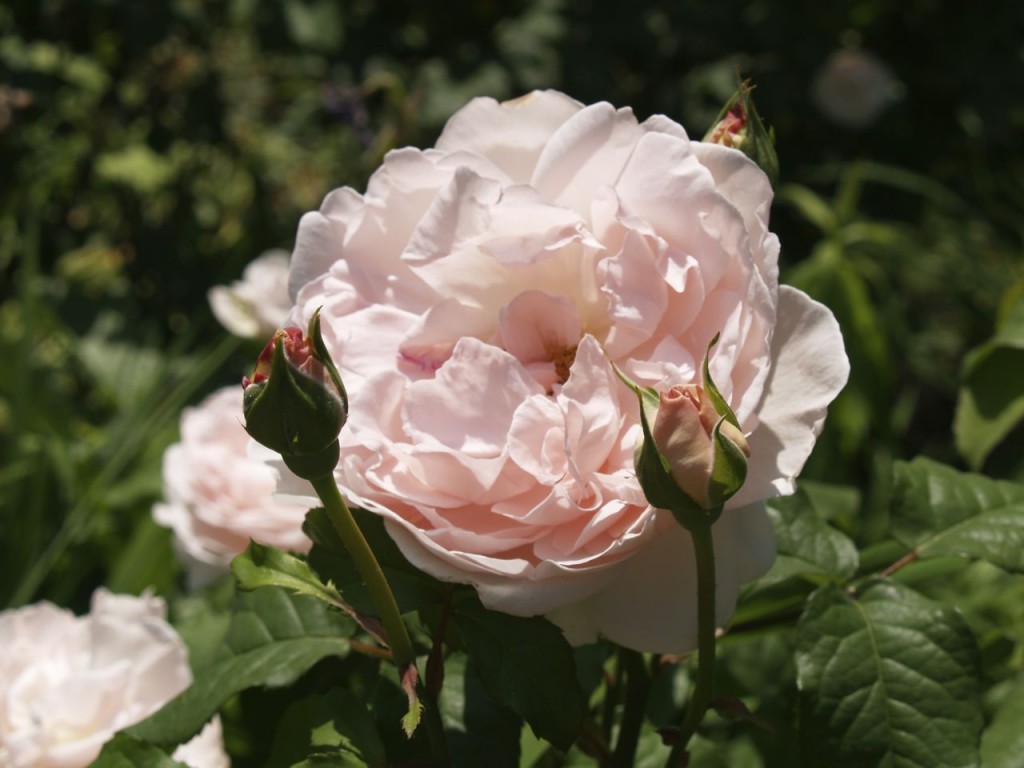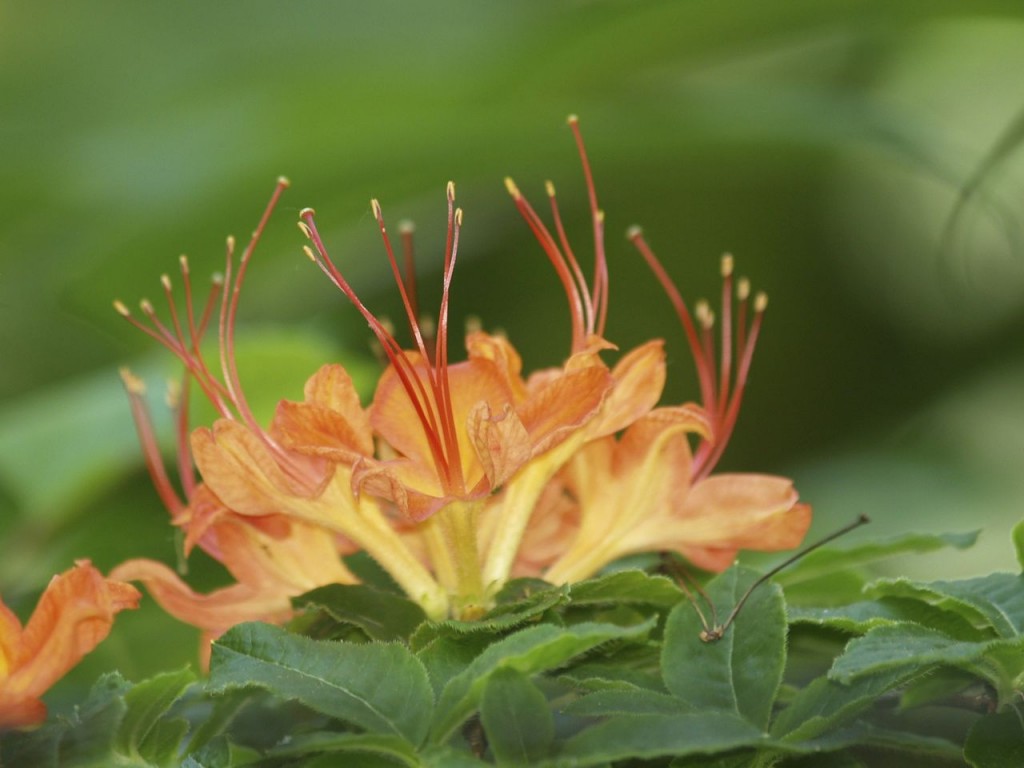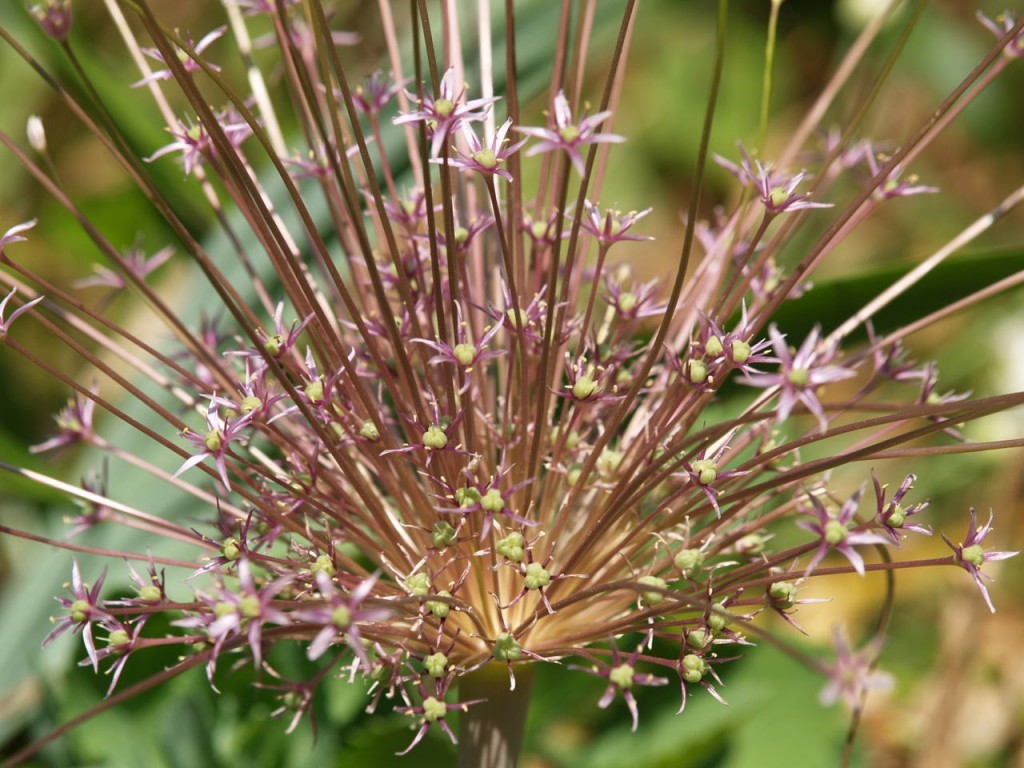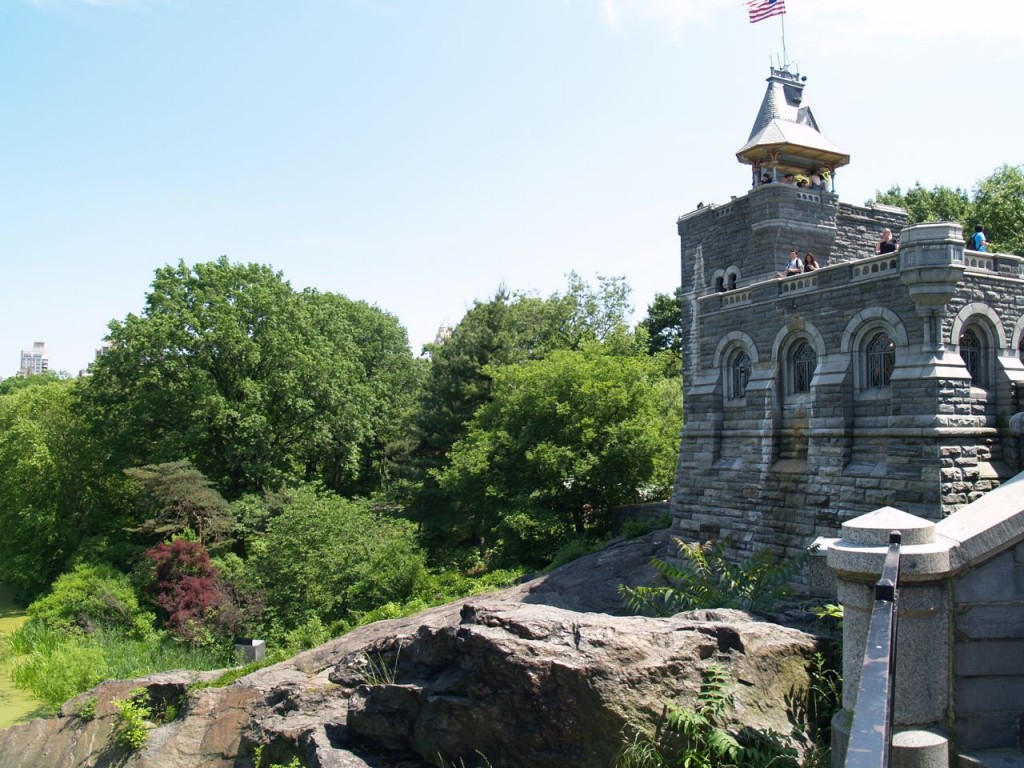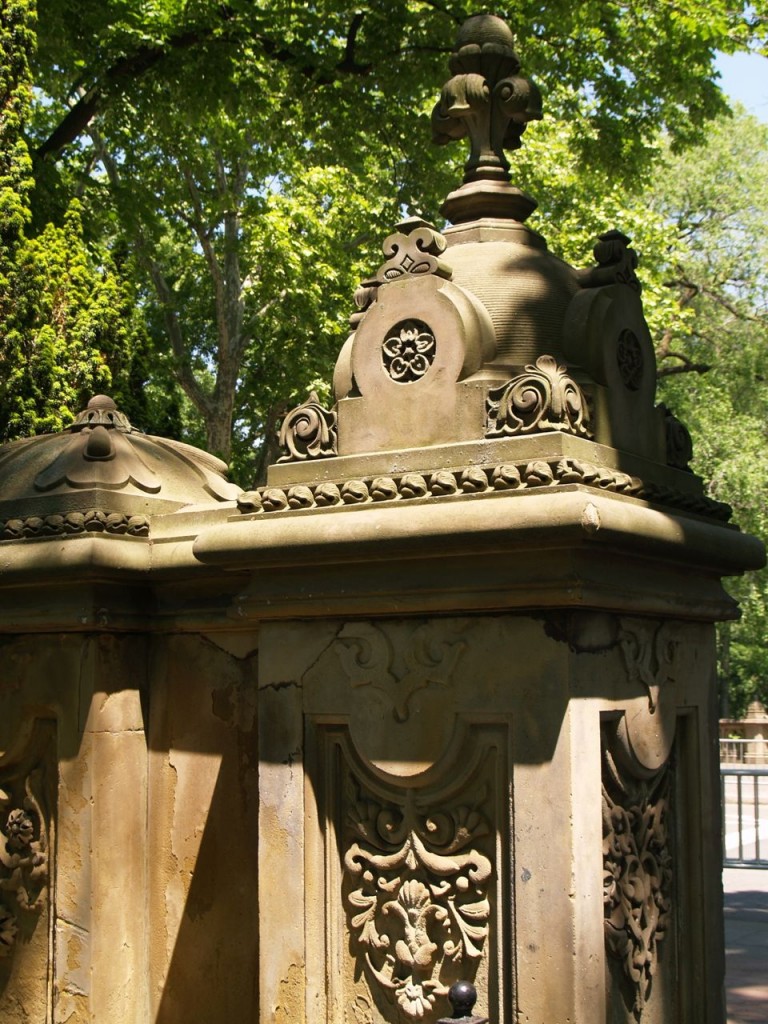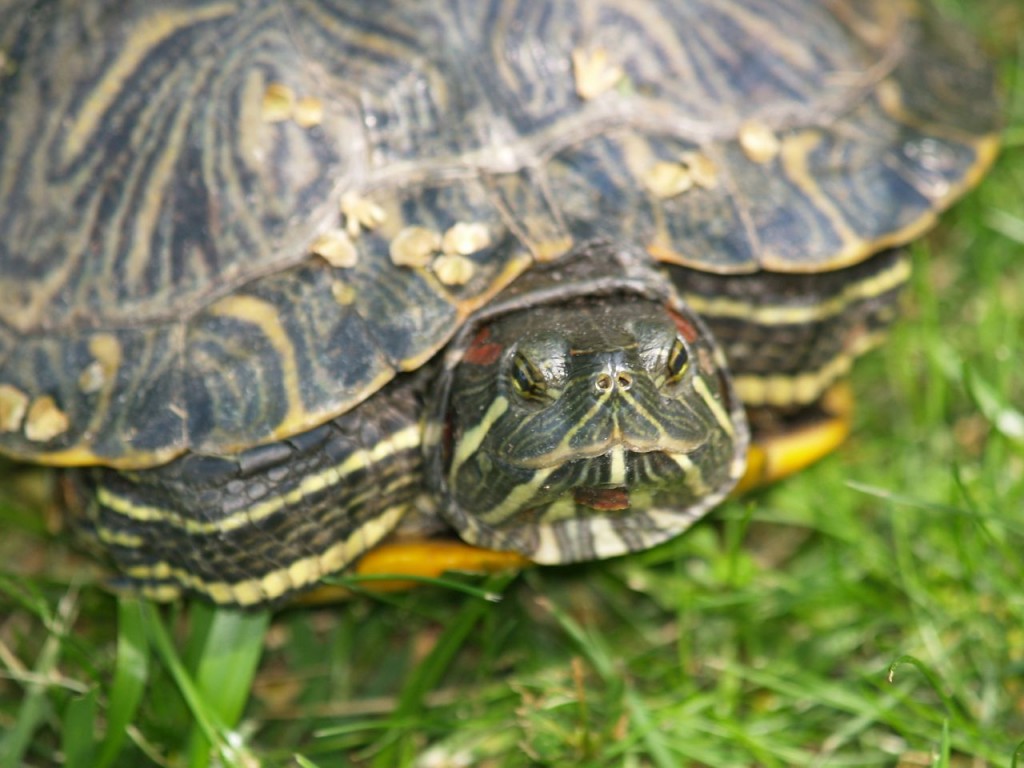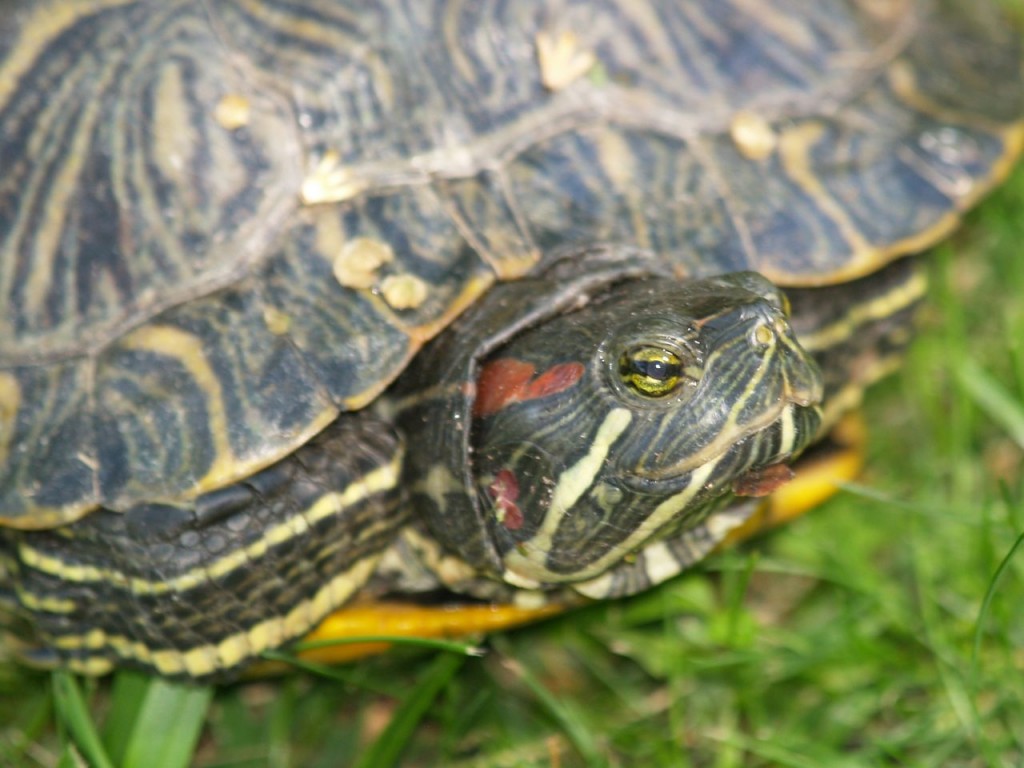Another day, another visit to Washington, DC’s US Botanical Garden’s corpse flower to view and photograph it. I love this corpse flower. I am obsessed with this corpse flower. It needs to bloom already though. To best see the changes, view the photos from the past seven days (July 11, July 12, July 13, July 14, July 15, July 16, and July 17). Also, see the “Corpse Flower” page on my website that has photos from everyday that shows the whole plant so the photos can be more easily compared. I can’t really tell what changed today from yesterday. It may be a little wider in the middle. I think the edges of the spathe are a little redder. I think the fringe edge of the spathe is pulling away a bit more. Finally, as for the daily smell report, there still is no smell.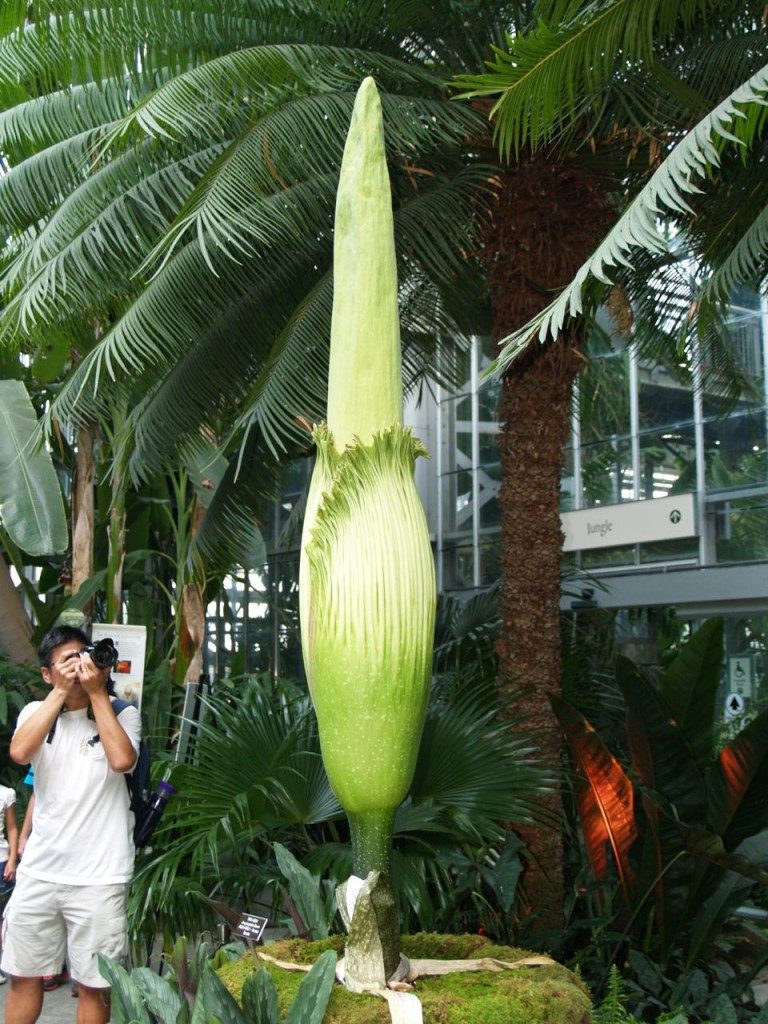
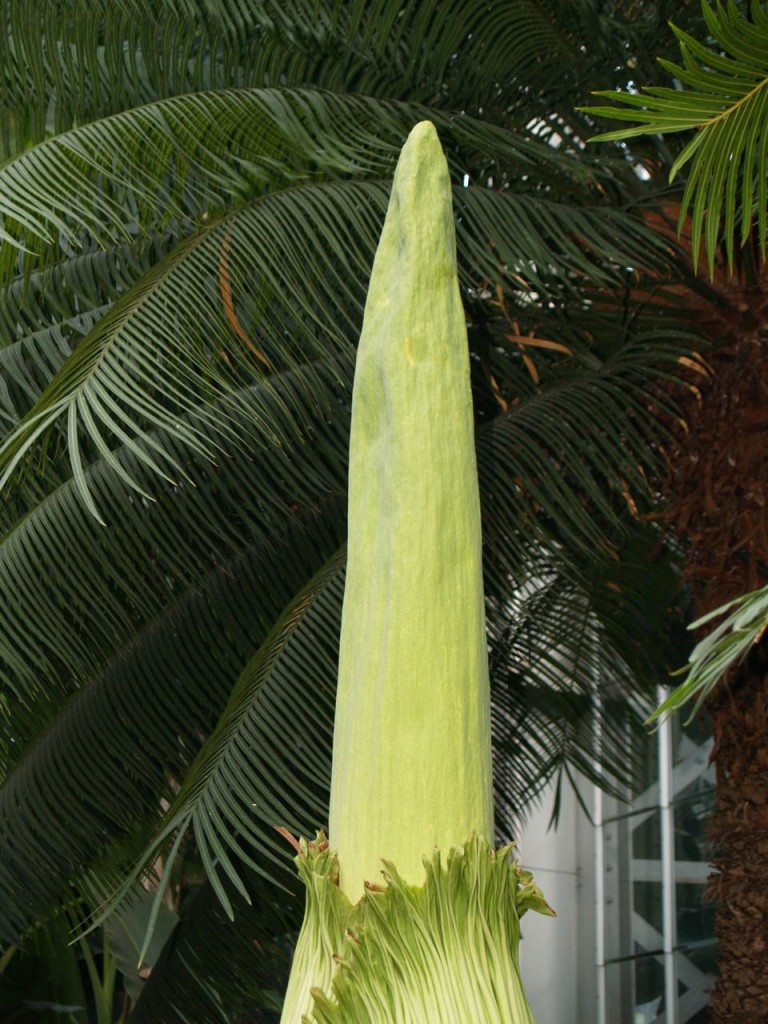
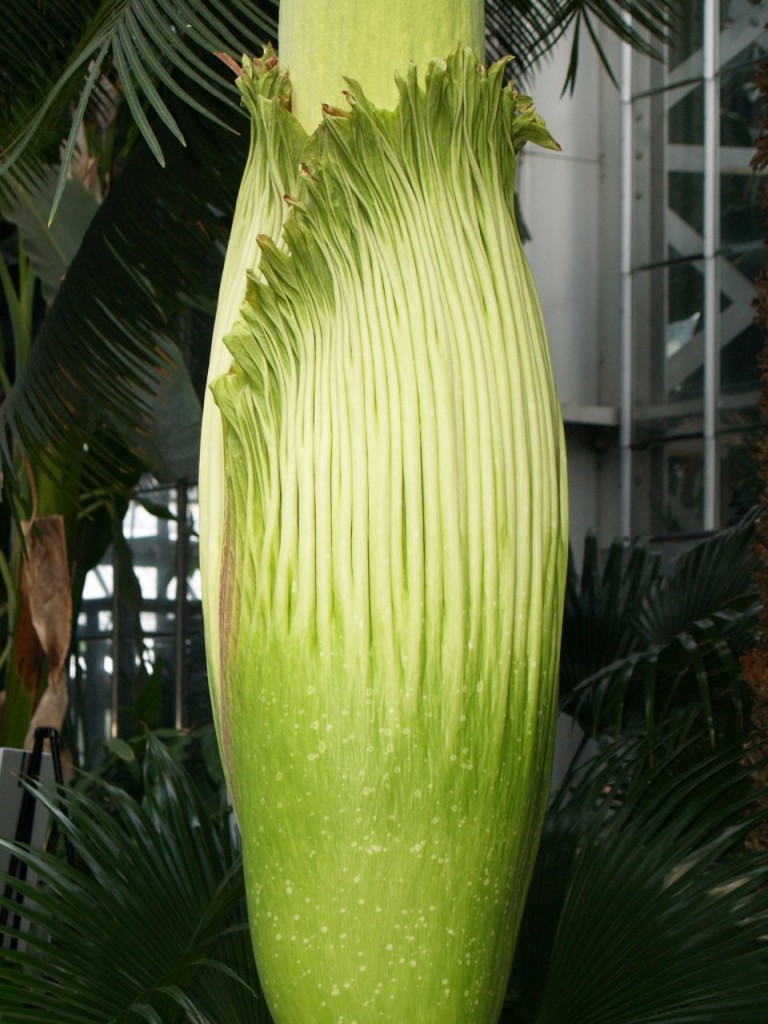
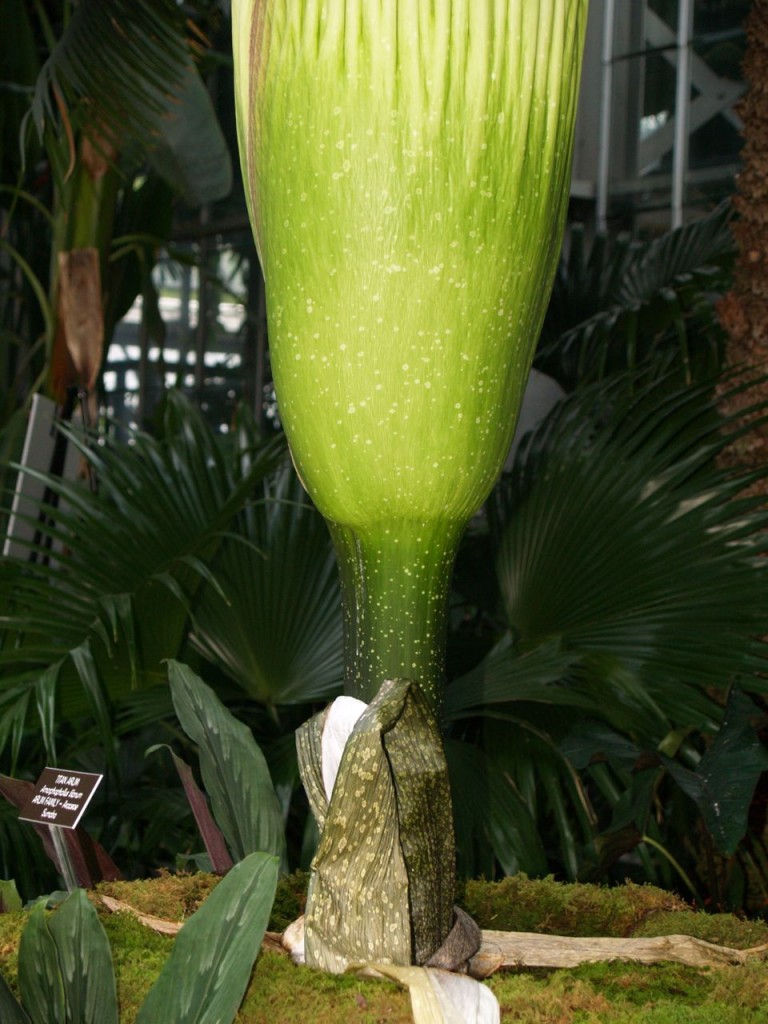
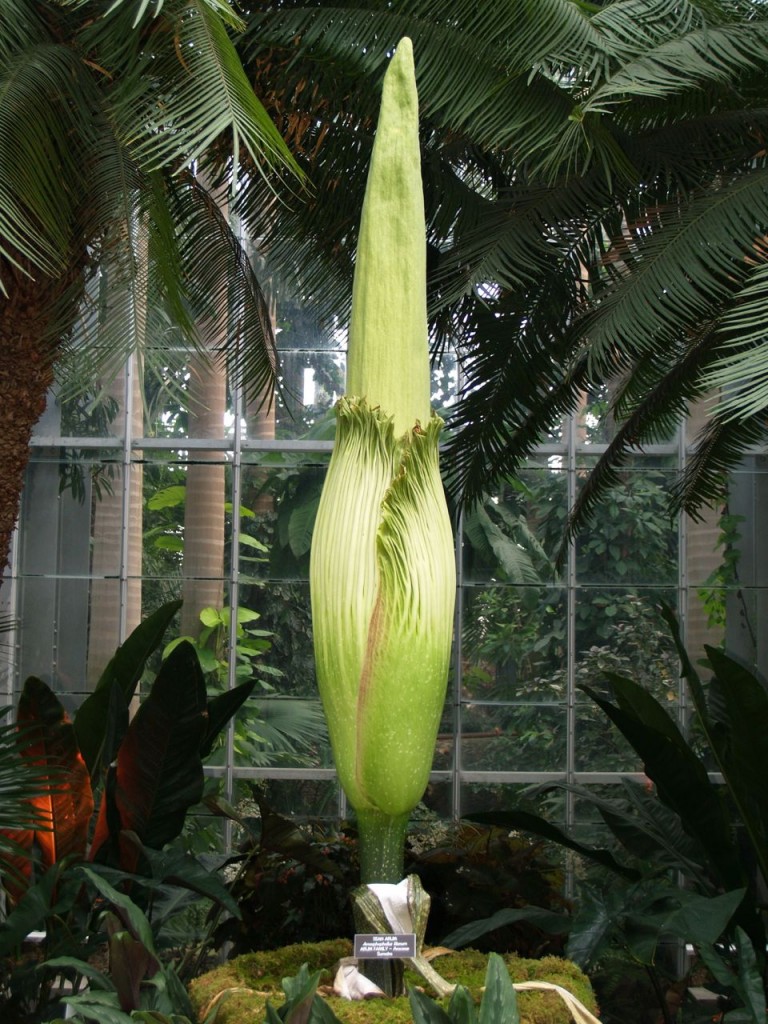
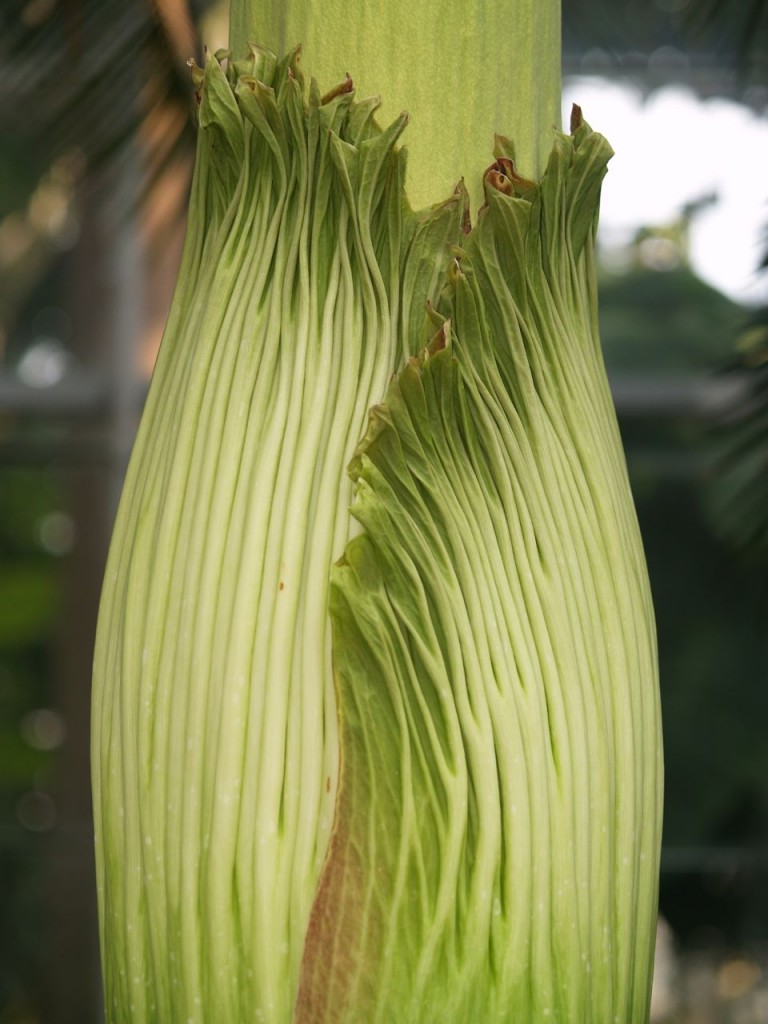
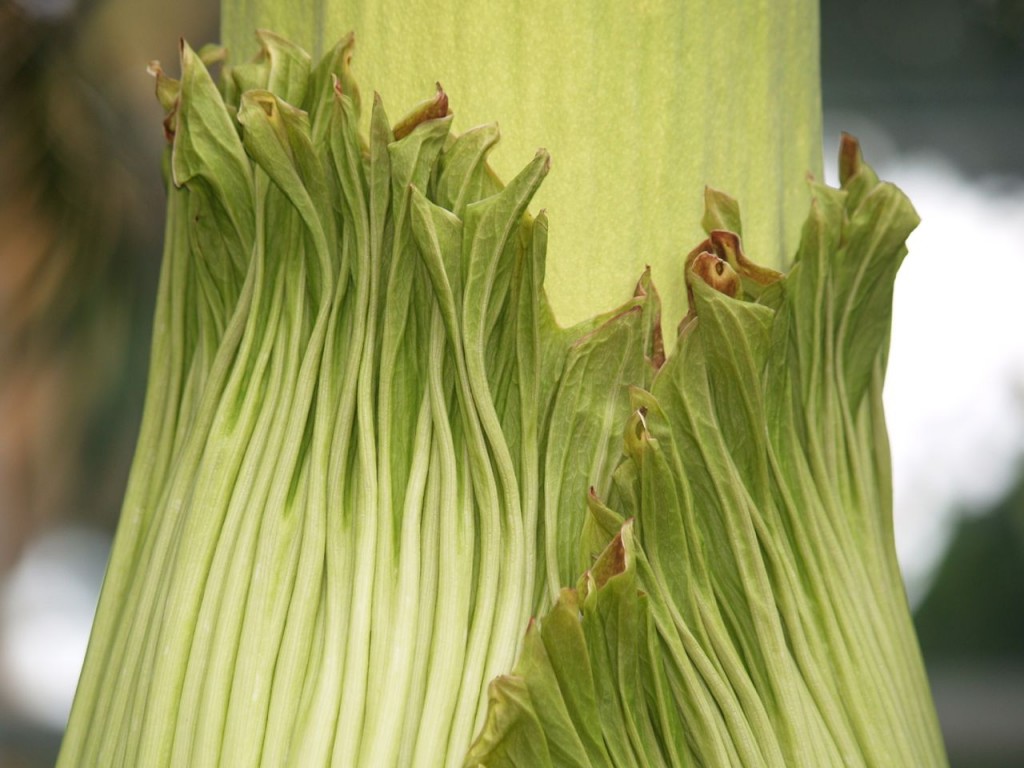
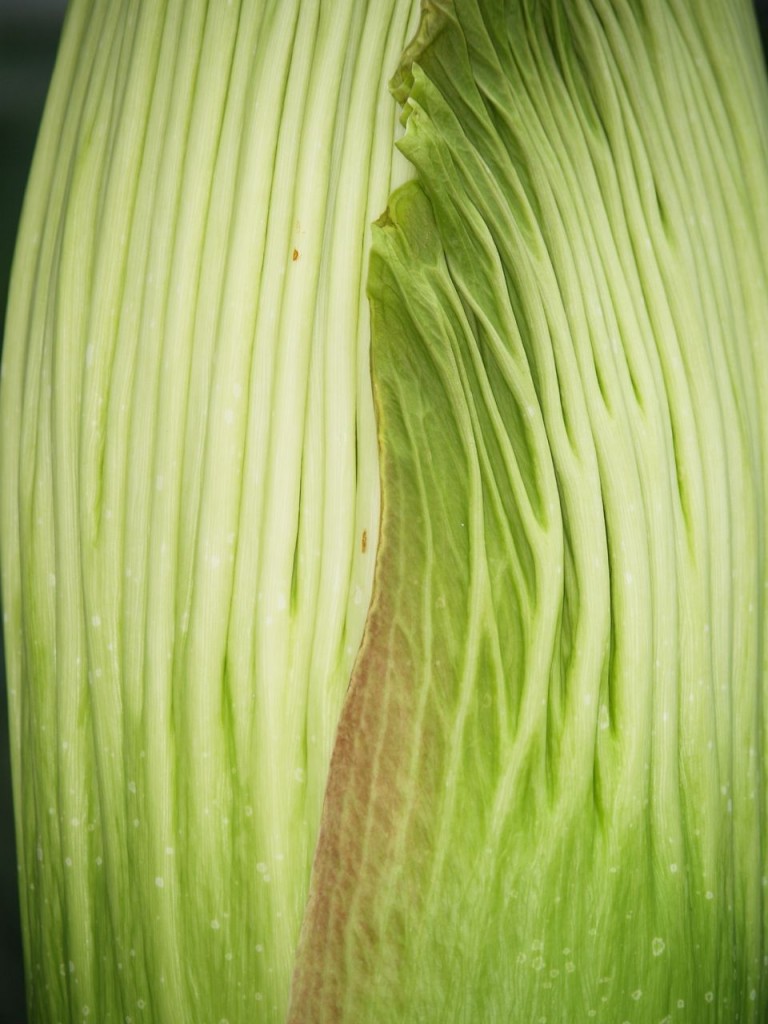
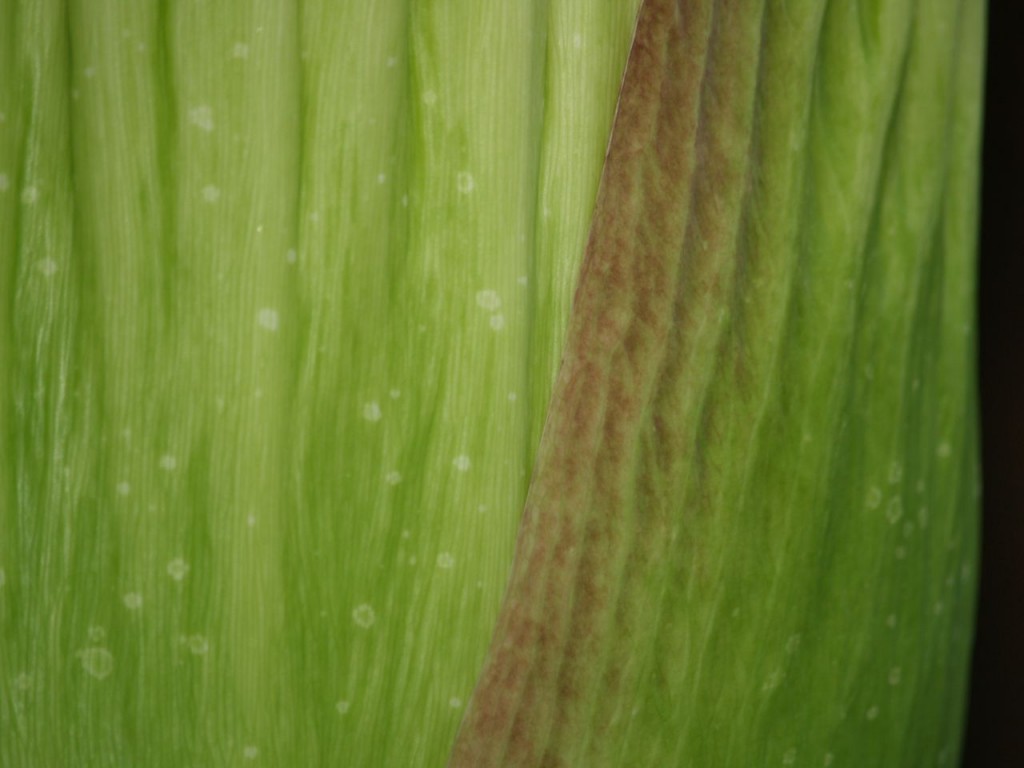
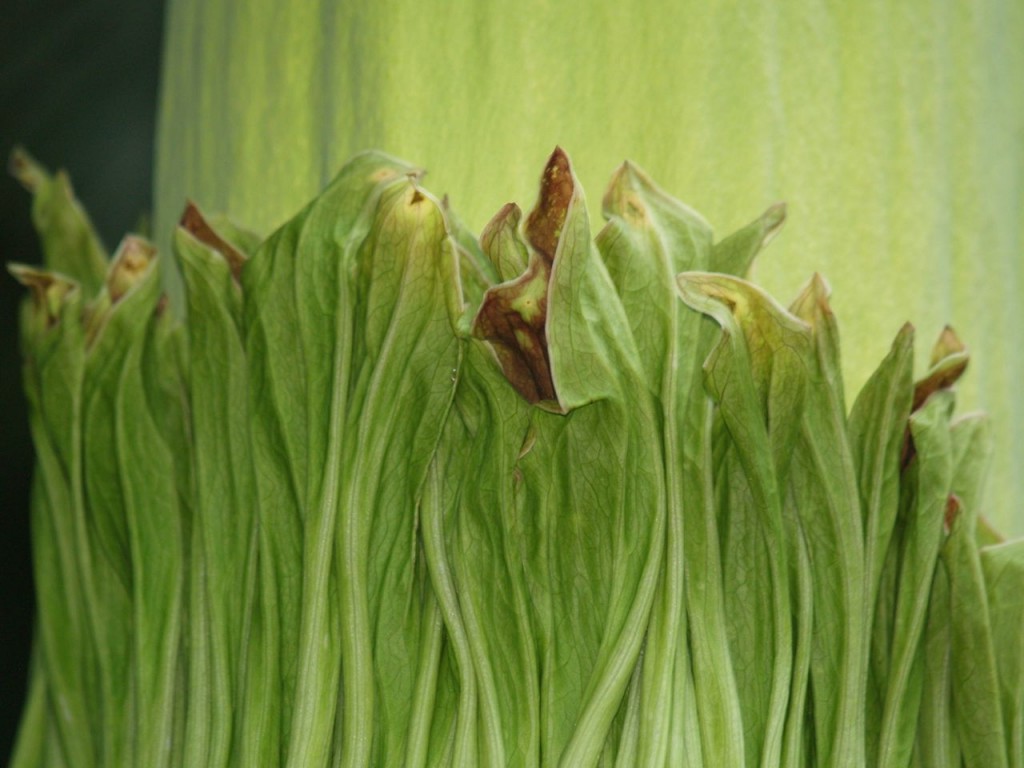
Tag Archives: Nature
USBG Corpse Flower: July 17
Let me just state the obvious: I am obsessed with this plant. I visit Washington, DC’s US Botanical Garden’s corpse flower daily to view and photograph it. I take more and more photos every day. I just find it beautiful. I love seeing the changes and discovering new beautiful details everyday. The last two photos on this page are where the spathe overlaps itself at the base. I squatted for several minutes to get a very low angle using my zoom lens to photograph the curl that is formed. I think it is a neat detail on the plant. I also love the pink edge of the spathe as it overlies the green of the spathe’s outer side.
To best see the changes, view the photos from the past six days (July 11, July 12, July 13, July 14, July 15, and July 16). I have also created a new page on my website that has photos from everyday that shows the whole plant so they can be more easily compared. The plant should bloom very soon, but it is still growing. I am not sure if it got any taller today, but I think it got wider. The edges of the spathe appear to be getter redder. I think the fringe edge of the spathe is pulling away a bit more also. Finally, as for the daily smell report, there still is no smell.
USBG Corpse Flower: July 16
It’s day six of my daily visits to Washington, DC’s US Botanical Garden’s corpse flower to view and photograph it. For the past five days (July 11, July 12, July 13, July 14, and July 15), I tried to take photos from the same spots, so that I could compare to photos from previous visits. However last night, the final green petal, which could be seen on the right in many of my previous photos, fell. When it did, it revealed where the spathe overlaps itself and thus where the spathe will open up when it blossoms. Thus, this morning the USBG rotated the plant’s pot so that it would open up to the front and in view of it’s stationary cameras. This of course makes sense, but it completely messed up my ability to take the photos in the same place to capture the same parts of the plant. Oh, well. However as the petal fell, there really is no point of reference to compare to previous days’ photos. The plant should bloom very soon, and it is still growing. The USBG’s executive director was speaking while I was there, and she said that it grew eight inches today. Finally, to answer what everyone is curious about, there still is no smell.
USBG Corpse Flower: July 15
For the fifth day in a row, I present my photos of Washington, DC’s US Botanical Garden’s corpse flower. As always I try to take photos from the same spots, so that I can compare to photos from previous day’s visits. To best see the changes, compare the photos below with my photos from July 11, July 12, July 13, and July 14. All the photos below were taken from approximately the same locations as yesterday. The clearest changes are still with the green petals that covered the spathe. In the first photo below, the green petal on the left has now completely collapsed. The green petal on the right side has now shriveled to about three inches or so below the spathe fringe, which is another inch or two below where it was yesterday. The spathe fringe seems to be as tight to the spadix as before. While it is not on USBG’s website, I read in a news article that it is still growing. Because there is little reference points in my photos, any height or width growth has been hard for me to detect. However, it occurred to me today when taking the photos, that I have been taking the photos further and further away everyday to get the entire plant in the photo. However as I have an adjustable lens, to a certain degree I can do that with just adjusting the lens. Also, it is easiest to tell if you go back to the July 11 photos, but the spadix has been slowly growing taller. Look at the height of the spadix past the the fringe of spathe. It is definitely getting taller. Finally, there still is no smell.
USBG Corpse Flower: July 14
At this point, I think I may be competing for, if not winning, the title of Washington, DC’s most obsessed corpse flower fan. Everyday I visit the US Botanical Garden’s corpse flower and try to take photos from the same spots, so that I can compare to photos from previous day’s visits. To best see the changes, compare the photos below with my photos from July 11, July 12, and July 13. All the photos below were taken from approximately the same locations as yesterday with the exception of the final photo of the very top. I changed locations with it because the light was giving me trouble, especially for the top, which is rather featureless. The clearest changes are still with the green petals that covered the spathe. In the first photo below, the green petal on the left is now falling. Yesterday it was upright at an angle. The green petal on the right side has now shriveled to about two inches or so below the spathe fringe, which is another inch or two below where it was yesterday. The spathe fringe seems to be as tight to the spadix as before. As for what most people seem to most curious about, the smell, there still is no smell.
USBG Corpse Flower: July 13
My photographic coverage of US Botanical Garden’s corpse flower continues. To best see the changes see my photos from July 11 and July 12. Once again, I have tried to take photos from a similar vantage point as before to better examine the changes. The first five photos in this post are taken from close to the same place as July 11 and 12. The last two are photos from new views than posted before. The front green petal seen in the first photo has almost completely collapsed, but on July 12 it was upright at an angle. The tallest green petal is clearly collapsing and is one of the most visible changes. On July 11, it reached about three inches above the spathe fringe, on July 12, it reached only about one inch above the spathe fringe, and today it even with or slightly below the fringe.
Updated to add: As I keep getting asked this, there is no smell yet. My understanding is that it only starts to smell or stink after the spathe opens. The smell attracts pollinators such as carrion beetles that like that smell. The pollinators only need to be attracted once the spathe opens, and the flowers that are hidden by the spathe are accessible.
USBG Corpse Flower: July 12
My obsession with photographing the US Botanical Garden’s corpse flower continues. My photographs from July 11 can be found here. I have tried to post photographs from a similar location as yesterday, so the changes can be seen easier. Today I stood in front of it looking at my photos from yesterday on my phone using the background as reference to try to view it from the same angles. I could definitely see changes. The fringes of the spathe (the section that will unfold and form the false “flower”) appear to be as tightly wrapped around the spadix (yellow-green middle spiky section) as yesterday, perhaps having loosened just a tiny bit. However, the green petals that covered the spathe have definitely moved further away from it. [Note: If I have named any of these parts wrong, I would appreciate it if someone would correct me. I am pretty sure I have spathe and spadix correct, but I don’t know if petals are the correct name for the green parts at the base.]
The below photo was taken on July 12 and added to blog post on July 13. I am adding it because I am posting a similar photo on the July 13 blog post, and this photo can then be used for comparison.
USBG Corpse Flower: July 11
The United States Botanical Garden (USBG) has a corpse flower otherwise known as titan arum (Amorphophallus titanum) that is currently in the process of blooming. It is called a corpse flower because when it blooms it smells rather bad, supposedly like rotting flesh. Corpse flowers bloom rather infrequently, as in a few years to a few decades apart. The one currently in bloom at USBG is about seven years old and has never bloomed before. Once a corpse flower is in full bloom, the bloom only lasts 24-48 hours.
I have always wanted to see a blooming corpse flower, so I got really excited when I found out that there is one in town. I took a few hours off today, so I could go see it. I plan to go down there everyday if possible to take photos of it. If you are interested, check back for updated photos.
Central Park in June
I love New York City’s Central Park. Then again, I suppose anyone who has ever been there loves it. I spent part of my recent trip to New York wandering around Central Park. Here are a few photos from my visit.
Central Park Turtle Who Loves Being Photographed
Wandering through Central Park yesterday, I encountered this turtle. He was in the grass right off of the Turtle Pond within a foot of the fencing to protect either the grass or wildlife or both. He totally wanted his photo taken. He just sat there while people walked by and would helpfully turn his head a bit so that everyone could get his best side. Really though he was so cute, he had no worst side. Then when he had had his paparazzi fix, he walked slowly back to the water, knowledgable that at least one photographer (me) would post his photos in a blog post and at least two photographers (my sister and me) would post his photo to Twitter. Life is good when you are a turtle in Central Park.
My questions for the Internet are: Can anyone identify for me what type of turtle this is? And what is that thing beneath his mouth that kind of looks like a tongue?
Update: I’ve had a suggestion that it is red-eared slider (Trachemys scripta elegans), which appears to be correct based on photos and NYC Central Park’s website. Still not sure what the thing below his mouth is.
